February 2025 will see the first of three Build-to-Order (BTO) launches of the year, as well as the yearly Sale of Balance Flat (SBF) exercise. This launch will offer about 5,000 BTO flats, as well as 5,500 SBF flats, totalling a supply of over 10,000 flats in this joint exercise.
Interested applicants will require an approved HDB Flat Eligibility (HFE) Letter in order to participate in this exercise.
For those who have a valid HFE letter, they will be able to choose from five projects across Kallang/Whampoa (800 units), Queenstown (1,110 units), Woodlands (1,540 units), and Yishun (two projects of 840 and 670 units). Likewise, a HFE letter will be required to apply for flats under the SBF exercise.
They will likely be a mix of Standard (Yishun and Woodlands) and Prime (Kallang/Whampoa and Queenstown) flats, based on their location. It is unlikely that any of these projects will be classified under Plus. Therefore, if you are looking for a Plus flat, there will likely be a greater number of them launched in latter parts of the year.
Let’s go over these projects, as well as their location attributes and unit mixes.
Kallang Whampoa – 800 units
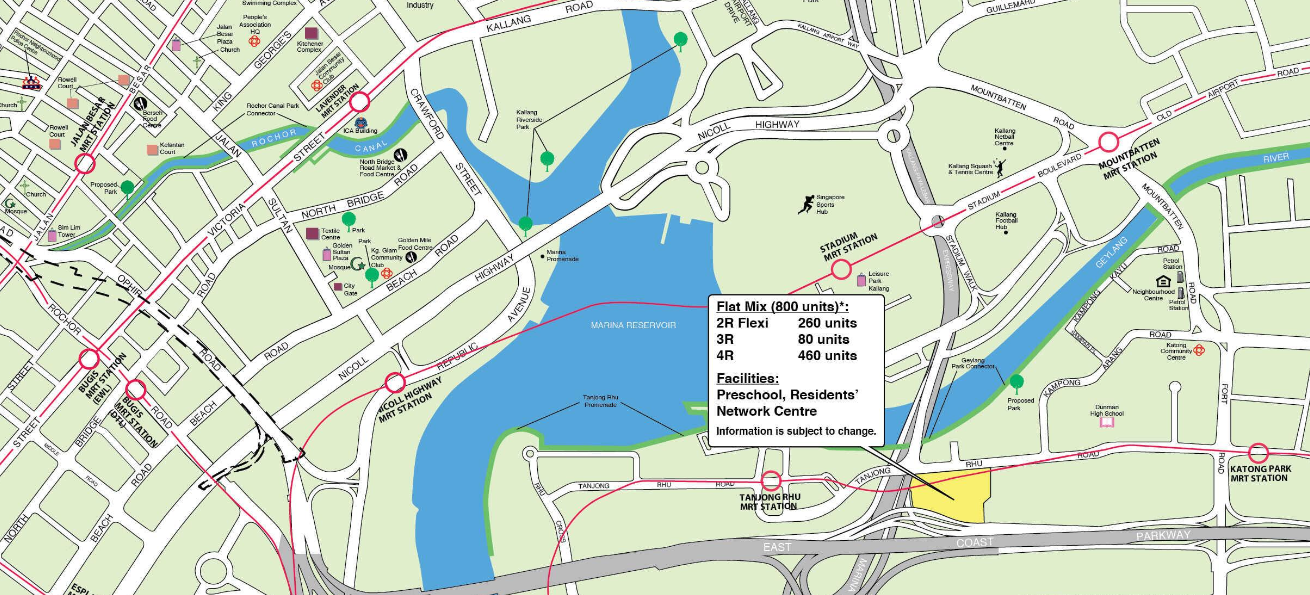
Source: HDB
This project is located within the upcoming Tanjong Rhu area, which saw its first BTO flats in the June 2024 BTO launch. Similar to the previous project in this area, we expect this to be a Prime project.
There will be a mix of 2-room flexi, 3-room and 4-room units, typical of Prime projects.
Located a 7-minute walk from Tanjong Rhu MRT station, the main Plus point of this project would be the easy, sub 10-minute commute to the Central Business District (CBD) via the Thomson-East Coast Line. Additionally, the higher floor units will have access to views of East Coast Park facing the south, as well as downtown and the Marina Reservoir to the north-west.
Additionally, there are plans to construct amenities to transform Tanjong Rhu into a new housing estate.
The previous projects at Tanjong Rhu received 3,963 applicants for 1,296 units, with a 2.1 first timer and 22.3 second-timer application rate for 4-room flats, which make up a majority of these Prime flats. We can expect to see similar demand for this project, following the success of the prior launch.
It is also worth noting that singles will be able to apply for 2-room units here, following the change in policies allowing singles to apply for Prime location 2-room flats that took place in the October 2024 BTO launch.
While the application rates for the exercise have yet to be revealed, it is likely that there is a strong and healthy demand for these Prime 2-room units, due to the oversubscribed nature of the flat type.
Queenstown – 1,110 units

Source: HDB
The other likely Prime project in this launch is this Queenstown BTO project, offering 2-room flexi, 3-room and 4-room units.
Off the bat, we can expect a much stronger demand for this project among Prime flat buyers as compared to the Tanjong Rhu development. This is due to Queenstown being a mature estate – looking at the map we can see that the project site is surrounded by amenities, such as a neighbourhood centre and library nearby.
Another major Plus for this site is that it falls within the 1km priority enrolment distance for both Queenstown and New Town Primary Schools. Compared to the Tanjong Rhu project which does not have the same benefits, couples planning to have kids are likely more inclined to apply for this project, especially given the lengthy 10-year minimum occupation period that they are obligated to stay for.
The previous BTO project that took place at Queenstown was Holland Vista, which saw a staggering 2,233 applicants for 228 4-room units. This consisted of a 6.6 application rate for first-timers, and 72.8 for second-timers.
We can expect a strong demand for this project, given its proximity to the nearby MRT station, as well as the access to nearby primary schools and a variety of amenities. This extends to the 2-room flexi units, where singles are likely to be drawn to the central location and conveniences.
Woodlands – 1,540 units

Source: HDB
This BTO project, which happens to be the largest among the February bunch, is located in Woodlands North, in the Marsiling area, and near the causeway.
The project will be standard project, offering a mixture of 2-room flexi, 3-room, 4-room and 5-room units.
As the area has yet to be developed, there is a lack of amenities in the area, which affected the application rates for the project in Marsiling during the June 2024 BTO launch. The launch received 581 applications for 429 units for 4-room, and 406 applicants for 362 units in 5-room.
The project is about a 5-minute walking distance from Woodlands North MRT station once walkways are paved, which will grant commuters a direct line into the city centre, albeit with a commuting time of about 45 minutes.
Given the large number of units available, there should be muted demand for this project – as it the most undeveloped and far out location of all the launches.
If you are looking to increase your chances at securing a BTO, this might be the project to gun for.
Yishun (Chencharu) – 840 and 670 units
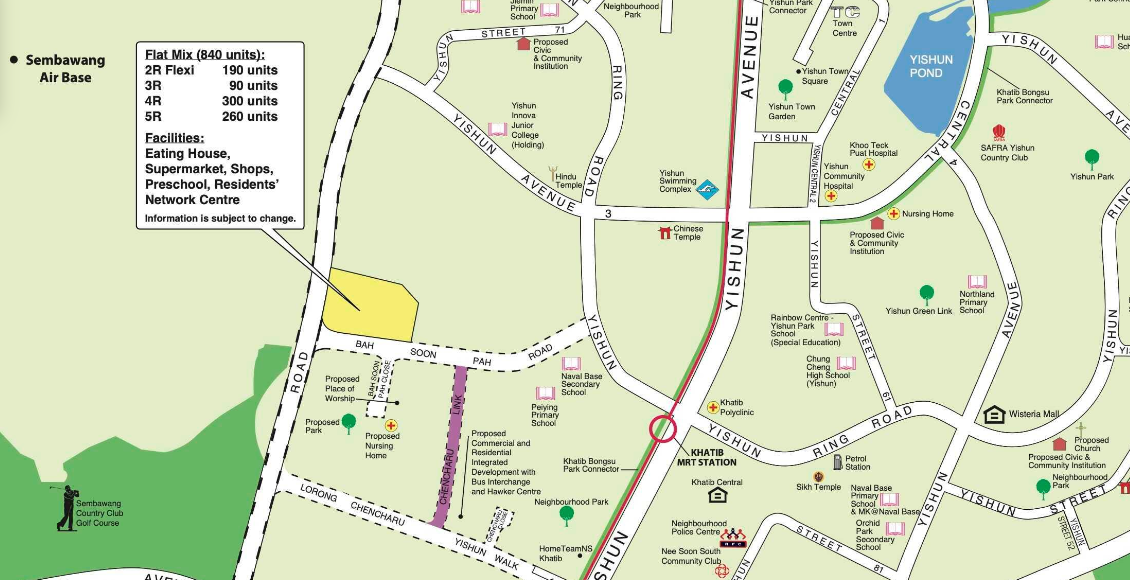
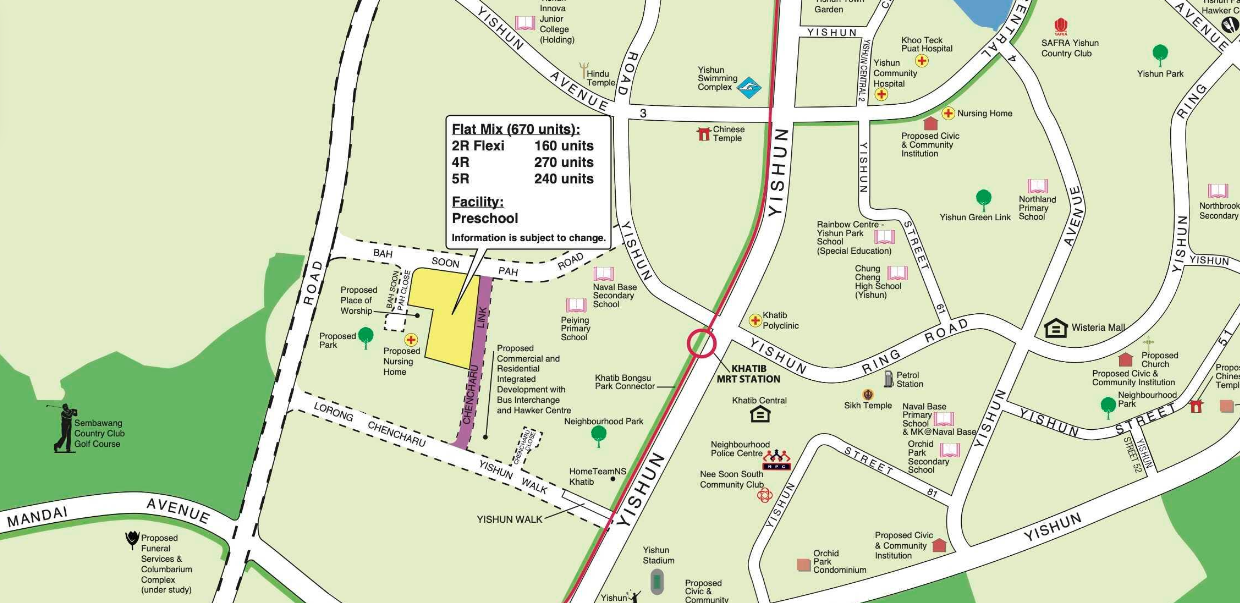
Source: HDB
The last BTO launch that took place in this new estate of Chencharu was in the June 2024 BTO launch, which saw 1385 applicants for 420 4-room units, and 1,609 applicants for 390 5-room units respectively.
Being an entirely new housing zone, there are no nearby facilities. The project will come with amenities such as eating houses and shops, as well as a childcare centre. The surrounding area will be redeveloped to introduce amenities like a park, nursing home, and place of worship.
As this development is to be built as part of an upcoming estate, the area currently suffers from a lack of connectivity. It is a 15-minute walk from Khatib MRT station.
We will also see new bus services providing transit options from this estate to other parts of Yishun, providing further access to amenities for residents.
There should be a healthy response for these standard flats, from the positive previous response and the future development plans of the region – something the HDB has promised about in a recent announcement.
Disclaimer
This information is provided solely on a goodwill basis and does not relieve parties of their responsibility to verify the information from the relevant sources and/or seek appropriate advice from relevant professionals such as valuers, financial advisers, bankers and lawyers. For avoidance of doubt, ERA Realty Network and its salesperson accepts no responsibility for the accuracy, reliability and/or completeness of the information provided. Copyright in this publication is owned by ERA and this publication may not be reproduced or transmitted in any form or by any means, in whole or in part, without prior written approval.
Some Singaporean couples have successfully own two properties. But careful long-term planning is a must.
For many Singaporean families, the pinnacle of housing aspiration is to own at least two properties in their lifetime – one serving as the roof over their heads, and the other, a means to generate consistent cashflow.
To achieve this, some Singaporean families have embraced the FIRE movement, aiming to achieve Financial Independence and Retire Early by cutting back on non-essential expenses. Others, particularly Baby Boomers and Gen-Xers, have successfully achieved dual-home ownership by capitalising on property booms over the years.
However, amid rising home prices today, is this dream still attainable for Gen Z and younger Millennials?
Below, we explore how some Singaporeans have successfully own more than one property in Singapore—whether it’s an HDB flat and a private home, two private properties, or a combination of residential and commercial/industrial properties.
1. Owning an HDB flat and a Private Home
HDB BTO versus resale flat
For many first-time homebuyers, their housing journey typically begins with an HDB flat, the most prevalent form of public housing in Singapore. More importantly, Singaporeans will have to decide between buying a new or resale HDB flat, even though both options allow them to benefit from first-timer subsidies. So how do they choose?
Build-to-Order (BTO) flats are essentially brand-new HDB flats meant for Singaporeans only. They are offered at subsidised prices and come with a fresh 99-year lease. But buyers will need to ballot for the opportunity to purchase a BTO flat, and due to intense competition, not all first-timers are successful in securing a BTO flat.
In addition, “Plus” and “Prime” BTO flats are subject to a longer 10-year Minimum Occupation Period (MOP) and more stringent resale criteria. It is also important to note that “Plus” and “Prime” flats cannot be rented out entirely even after MOP.
Meanwhile, resale flats are sold on the secondary market, typically by another homeowner and their prices are determined through negotiation. Currently, these flats are subject to a 5-year MOP. After this period, owners are allowed to rent out the entire unit, making such homes ideal for those seeking passive income from a second property.
Some couples have bought HDB flat by registering ownership in one partner’s name, while listing the other as an essential occupier. After completing their MOP, the essential occupier spouse proceeds to purchase a second property.
That said, in this scenario, each party must be able to secure sufficient loan to finance the purchase of their corresponding property.
For others, they have bought their next private property after meeting their MOP and paying ABSD.
Alternatively, after meeting the MOP, HDB flat owners can now consider buying their next private home. HDB flat owners can keep their existing HDB flat while buying a second residential property, but they will need to pay the ABSD.
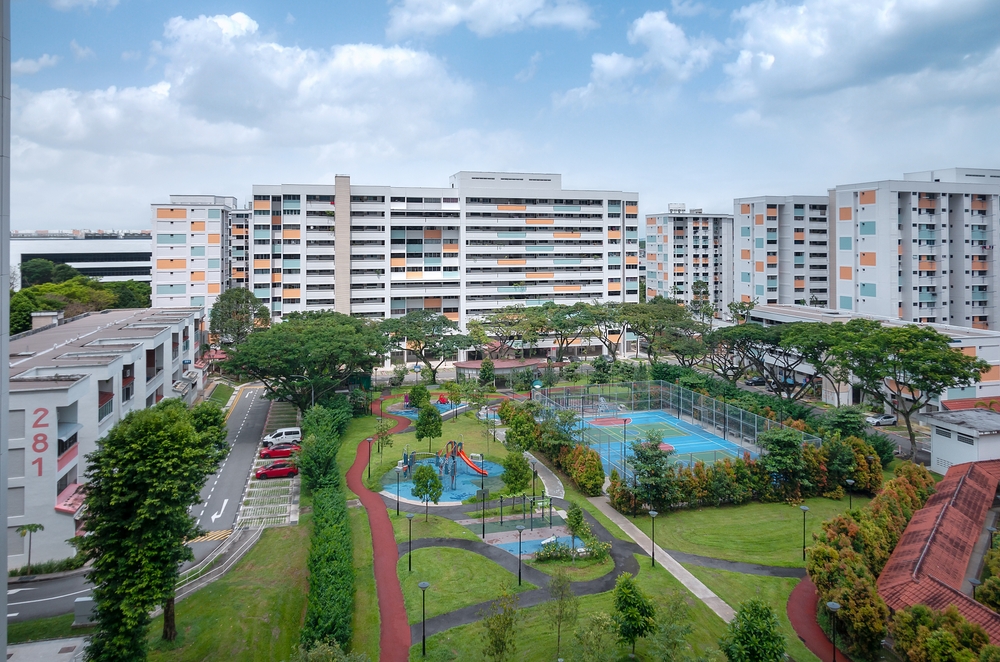
2. Owning Two Private Properties
a. Paying ABSD to own two private properties as a couple
A Singapore couple with an existing private property will be able to hold two properties concurrently, provided they pay ABSD on their second home. Scenario 1 above outlines the implications of this strategy.
b. Decoupling and buying two private properties
Alternatively, couples can choose to decouple and purchase two private properties on the onset. The prerequisite, however, is that both parties will have to secure loans for their respective purchase. This also ensures each spouse has individual ownership of their property.
Otherwise, if both spouses share joint ownership on a property, they may consider decoupling. This process involves one party selling their share of the property to the other. The purchasing party must also have sufficient CPF funds and/or resources to afford their partner’s share. Once completed, the selling party is free to purchase another property without incurring ABSD.
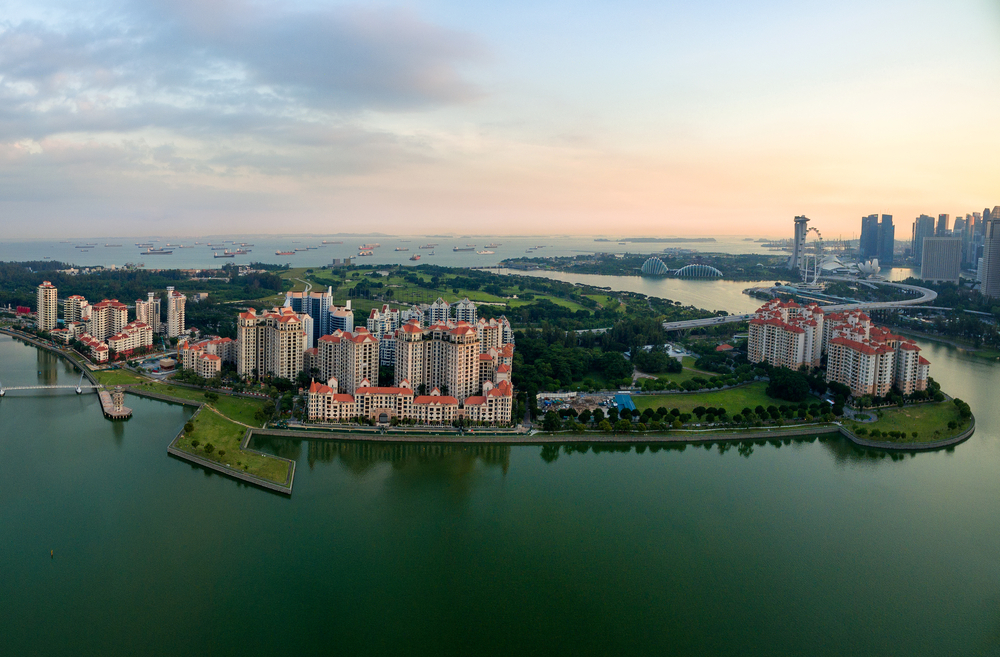
3. Owning a Private Property and a Commercial/Industrial Property
If you are looking to co-own a residential property and want to avoid ABSD entirely, you might want to consider investing in a commercial or industrial property instead. The key difference is that mortgage loans for such properties can only be financed with cash, not through CPF, which is commonly used for residential properties.
Owning a commercial or industrial property as an investment property is relatively straightforward, and not as daunting as many people believe it to be. There are plenty of strata commercial and industrial units available in the market that cater to various budgets.
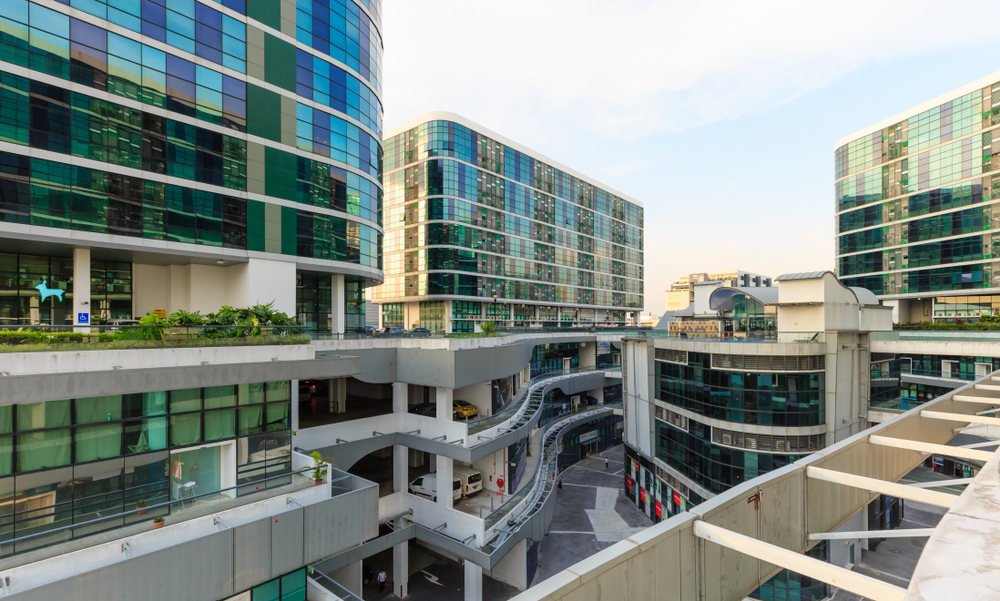
An investor with good credit status may be granted up a loan amounting to 80% of the property’s value, with the remaining 20% payable in cash as a deposit.
For example, if a freehold second-floor retail unit is priced at $1 million, and the buyer can secure an 80% loan, they will need to place a $200,000 deposit for the property. Supposing the shop is currently tenanted, the buyer will have immediate cash flow to support the loan payments.
In closing
So, there you have it—three strategies for how a Singaporean couple can achieve their property dream of owning at least two properties concurrently. That said, there are other factors to consider. In the event of a dispute, how will the assets be distributed? Additionally, one must be careful in assessing the impact of higher property taxes against the financial viability of their investments.
In short, the dream of owning multiple properties is still attainable for Singaporean couples. But before you take the plunge, be sure to consult with your professional ERA salespersons and bankers to effectively plan and execute your roadmap to dual property ownership.
Disclaimer
This information is provided solely on a goodwill basis and does not relieve parties of their responsibility to verify the information from the relevant sources and/or seek appropriate advice from relevant professionals such as valuers, financial advisers, bankers and lawyers. For avoidance of doubt, ERA Realty Network and its salesperson accepts no responsibility for the accuracy, reliability and/or completeness of the information provided. Copyright in this publication is owned by ERA and this publication may not be reproduced or transmitted in any form or by any means, in whole or in part, without prior written approval.
With so many projects to choose from, which is the right one for you? Whatever your choice may be – may the odds be ever in your favour.
The Housing & Development Board (HDB) has officially launched 8,500 Build to Order (BTO) flats on 16 October 2024. This rounds up the 19,600 BTO flats promised in 2024.
This exercise features a total of 15 projects—a record number—comprising 7 Standard projects, 7 Plus projects, and 1 Prime project.
A diverse range of flats, including 2-room Flexi, 3Gen flats, and Community Care Apartments, are available under the new flat classification system of Standard, Plus, and Prime categories.
The reclassification of flats might sway some first timers away from the Plus and Prime flats, balance demand across the board.
Plus Flats Make Their Debut
Plus flats are the one of the three new classifications for BTO flats. This is the first time that they are being launched for sale.
Plus flats launched this round can be found in Ang Mo Kio, Bedok, and Kallang/Whampoa.
These flats are characterised by their ‘choicer’ locations, which are near MRT stations, as well as existing and/or future town centres and amenities.
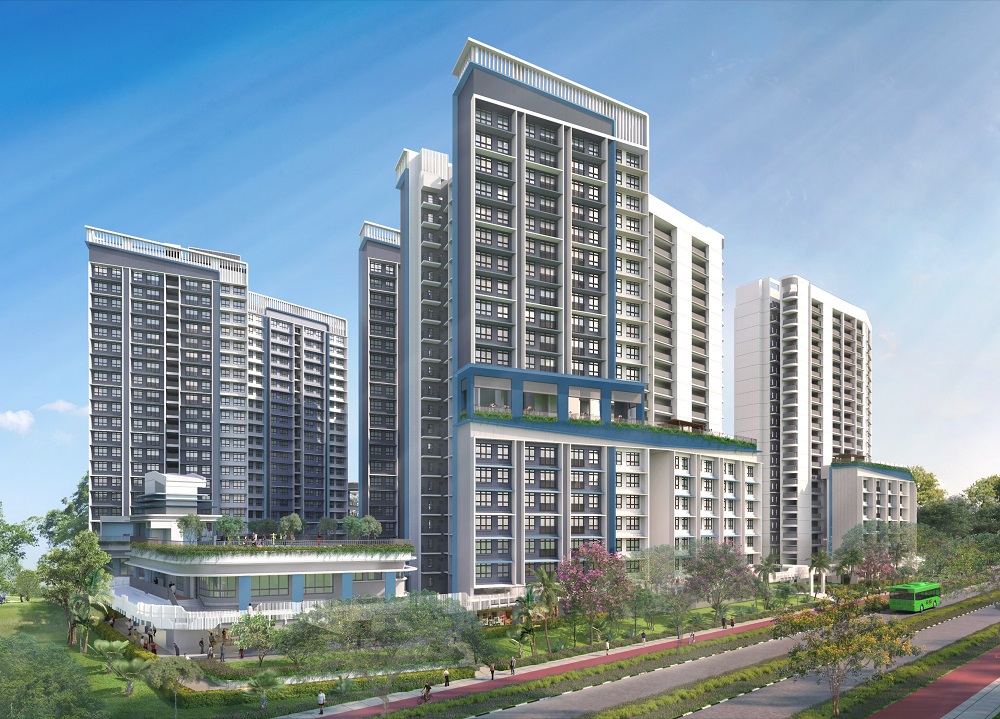
Bayshore Palms (Source: HDB)
Plus flats in Bedok (both Bayshore and Kembangan) are expected to be popular as they will be in walking distance of an MRT station. Bayshore will be a new precinct near East Coast Park, which is a popular area; the development also features units with full-height windows that open to a sea-view. Meanwhile, Kembangan, which is a developed estate, will see its first flats launched since the late 1980s.
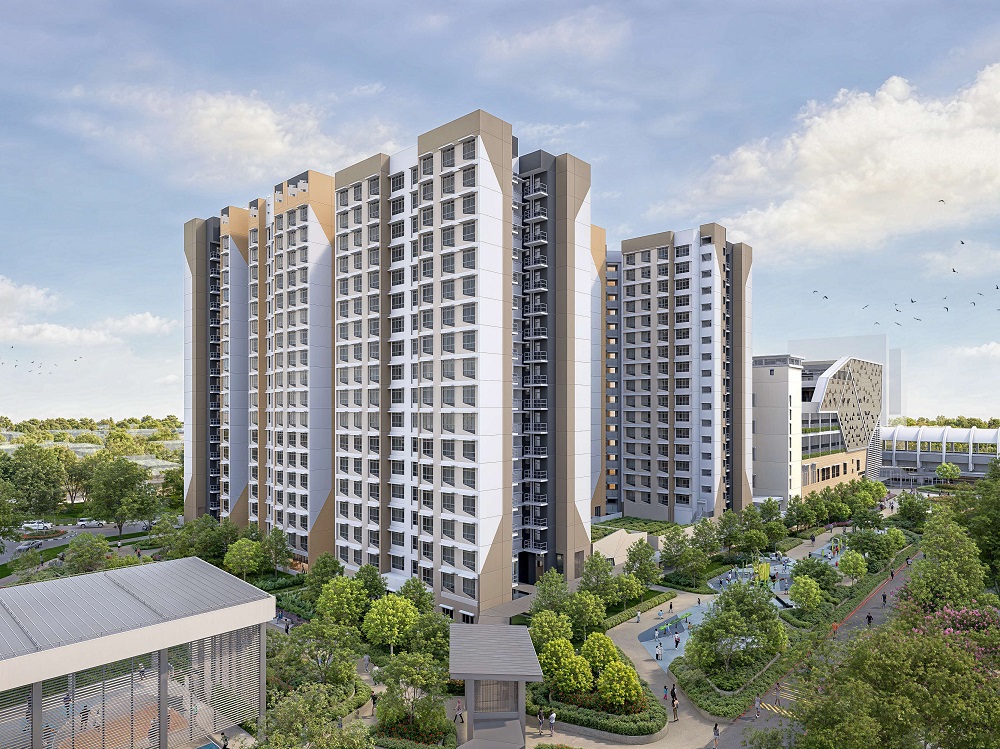
Kembangan Wave (Source: HDB)
We expect the Plus project at Ang Mo Kio to see strong demand, since it’s located within a short walk to Ang Mo Kio’s town centre and AMK Hub. The last BTO in Ang Mo Kio in 2022 saw an application rate of 13.5. However, the new project is likely to fall within 1-2km of CHIJ St. Nicholas, which is slightly out of priority enrolment distance, and could balance out demand.
So – how do they differ from the already existing Prime flats?
In the last two years, new flats in Kallang/Whampoa have fallen under the Prime category, due to their strong locational attributes. However, with the introduction of the Plus category, we are seeing two Kallang/Whampoa projects being classified as Plus for the very first time. These Plus flats also cost up to $60K less than the Prime flats at Crawford Heights.
Let’s take a case study of the trio of Kallang/Whampoa project offerings, comparing their prices with what is available on the resale market.

Source: HDB, ERA Research and Market Intelligence
As we can see, the BTO prices for these flats are very attractive as they are sold at significant discount off the market price in the resale market. This is because BTO prices are delinked from resale market prices and HDB prices BTO based on what household incomes up to $14,000 a month can afford to pay based on a Mortgage Servicing Ratio that is below 30%.
The price difference is very marginal; the starting prices (excluding grants) are just $46,000 more for Prime flats in Kallang Whampoa. As resale restrictions of Plus and Prime are largely similar, we can foresee most buyers gunning first for the Prime flats at Crawford Heights as they are nearer to the city, facing a waterway and have a more attractive façade and architectural design.
Stricter restrictions for Plus/Prime Flats
Resale subsidy clawback
Both Plus and Prime flats will feature tighter resale restrictions such as a 10-year MOP, a resale income ceiling of $14,000 and 6-9% subsidy clawback.
These subsidy clawbacks will be based on the eventual resale price; which may not be too high as there will be an income ceiling cap on the eventual resale purchaser. Assuming an eventual resale price of $1.3 million, a 8% clawback is $104,000.
But with the current BTO price of these plus and prime flats at 300-400K cheaper than resale flats in the vicinity, the BTO purchaser is enjoying significant market price discount for a new brand flat in the same location. So, the clawback amount should not be a deal breaker.
The reclassification of flats might sway some first-timers away from Plus and Prime flats, balancing demand across the board. Despite the subsidy clawback, we did see robust demand for Prime flats under the previous BTO sales launches.
Minimum Occupation Period (MOP)
In addition to this, Plus and Prime flats will feature a 10-year MOP period, double that of standard flats.
This could be a cause of concern for potential homebuyers. For example, job changes, expansion of family, or caregiving duties for elderly parents might trigger the need to shift homes. So buyers are concern about how their housing needs may evolve over time, and may choose not to be locked in over a prolong MOP.
As a result, some buyers might be drawn toward conveniently located Standard flats. We anticipate that Pasir Ris and Sengkang flats will be popular, given their shorter construction time, proximity to MRT or LRT stations and the availability of amenities in the area.
Other Resale Restrictions
These Plus and Prime flats can only be resold to Singaporean citizens with an income ceiling of $14,000.
It is also worth noting that the 15-month waitout period for eligible private property downgraders will be doubled to 30 months for Plus and Prime resale flats.
Consequently, private property downgraders may consider alternatives to Plus and Prime resale flats. Such downgraders typically have more generous housing budgets and are willing to pay a premium for their ideal HDB home.
Prime flats to pilot the ‘White Flat’ program
Crawford Heights in Kallang/Whampoa represents the first time that HDB will be piloting the option to purchase a ‘white flat’.
Coincidentally, this will be the only project in the Prime category, wrapping up the year which saw Prime projects launched in areas such as Tanjong Rhu, Tanglin, and Holland Village.
‘White flats’ are an opt-in where applicants can choose for their flat to come in a beamless, open-concept layout, where living and bedroom spaces are not separated by walls. The ‘white flat’ concept will be popular among young couples who are looking to extensively renovate their units. However, these buyers should be mindful that excessive renovation works could make it less appealing to future buyers.
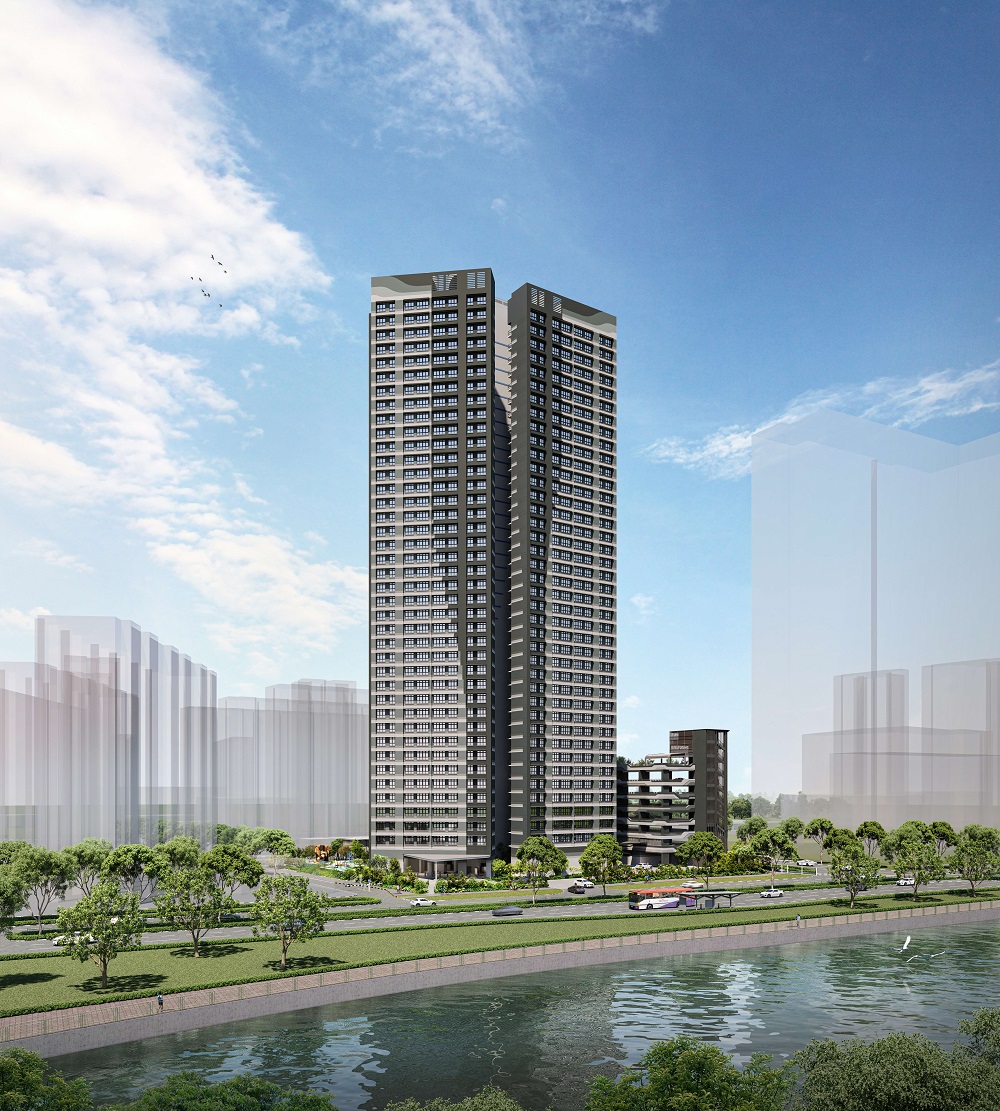
Crawford Heights (Source: HDB)
Standard Flats still make up the majority of flat supply, with some projects expected to see stronger demand
As defined by HDB, standard flats will be found across the greatest variety of locations, and make up the majority of new flat supply. Standard flats will also be the most affordable option with the fewest resale restrictions, essentially making them the most accessible form of housing for Singaporeans.
In June’s BTO exercise, only the Woodlands and Tampines projects had a shortened waiting time of under 3 years. The number of flats offered at these projects total up to about 1,352 units.
In contrast to this, 2,085 flats across three projects in Sengkang and Bukit Batok will be launched with expedited waiting times – about 1.5 times that of the previous launch.
The project in Bukit Batok (West Brickville @Bukit Batok) features a brief 2-year wait time, one of the shortest ever for HDB flats.
These launches with shorter wait times, combined with the 5-year MOP creates the some of the shortest runways available for asset progression today, and should be a popular choice.
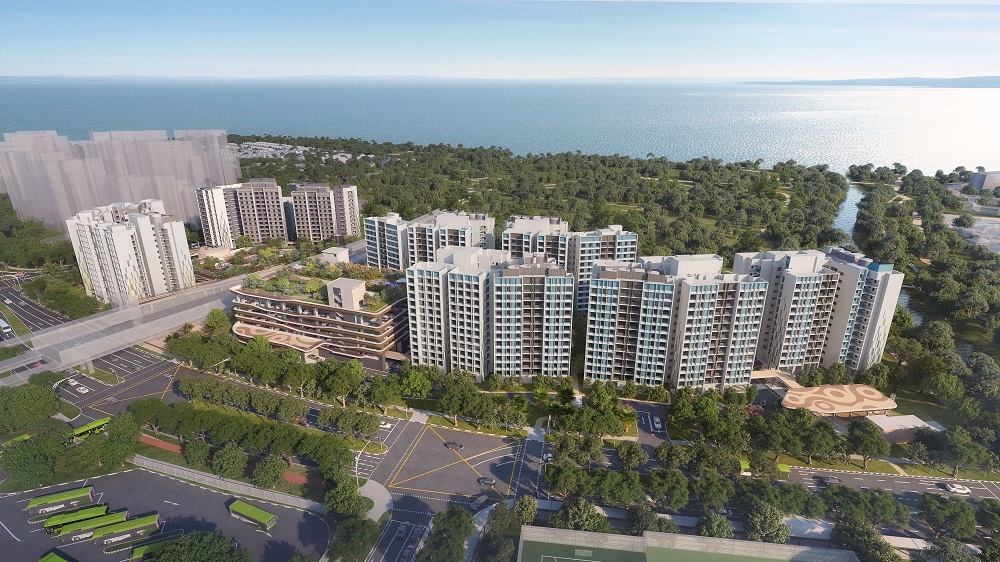
Costa Riviera I & II (Source: HDB)
In particular, the twin projects at Pasir Ris are located within walking distance of an MRT station, which could be a major selling point for many interested applicants – especially those with family living in the area. We expect the 4- and 5-room flat options to be among the most popular choices for first-timer applicants.
This is followed by Sengkang which is near LRT stations and amenities such as Seletar Mall, and are priced more attractively. The Bukit Batok project is located across from Tengah, and residents will be able to enjoy the fist-mover advantage by staying near a rapidly-developing estate, which will see a future MRT station along the Jurong Regional Line.
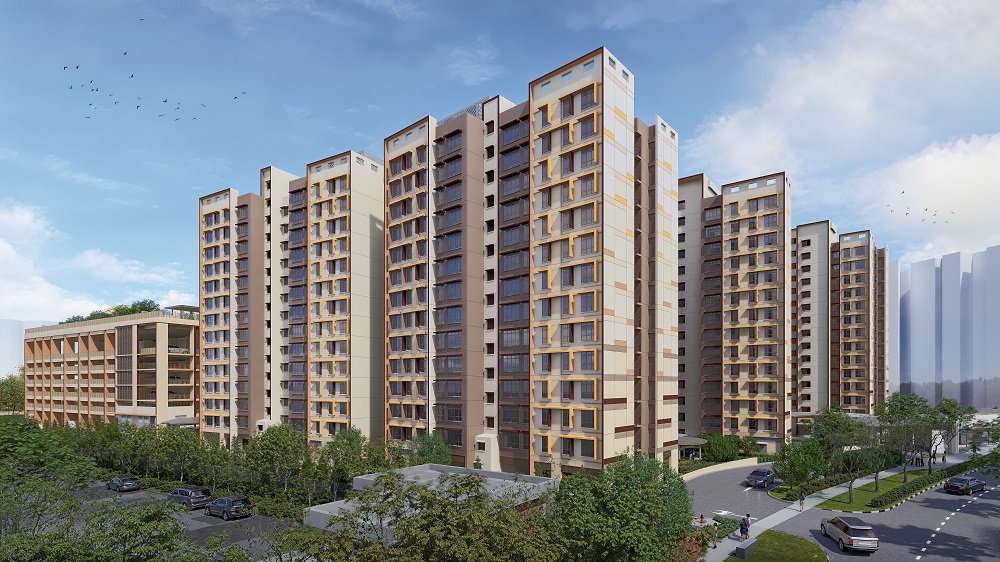
West BrickVille @ Bukit Batok (Source: HDB)
The Jurong West Project is located far away from the nearest MRT. However, with over 1,800 units available and 4-room prices starting from $290,000, this project looks to be the most affordable and accessible option for budget-conscious applicants.
2-room flat availability for Singles across all housing models
Application rates for 2-room flats among singles remains high, particularly in popular housing estates. In June’s sales launch, the 2-room application rates for Singles reached 7.0 for the Yishun project and 6.4 for the Jurong East project.
Giving singles the chance to buy 2-room flats in mature estates allows them to live closer to their parents and makes it easier to manage caregiving needs.
Conclusion
Here are a few key takeaways that we have learned from the launch of this BTO exercise:
- Standard flats provide the most flexibility. They are the most affordable flats with the fewest resale restrictions, and would appeal especially to those looking to upgrade to a private property after the 5-year MOP.
- Plus flats create good and convenient homes for people that are not looking to upgrade their property in the medium term. They feature homes in established estates like Ang Mo Kio and Bedok, allowing people to stay near their parents. They could also be a popular option for singles as previously their BTO options were oversubscribed.
- Prime flats are still the go-to option for owner-occupiers. They feature the best locations close to the city centre, and close to amenities and transport notes.
Looking forward to 2025
In February 2025, HDB will offer about 5,000 flats in Kallang/Whampoa, Queenstown, Woodlands, and Yishun. The launch would focus on creating more housing in up and coming areas such as Chencharu, Woodlands North, and Tanjong Rhu.
However, in terms of diversity for the projects offered, the current October launch has a wider variety across more popular and attractive locations. Therefore, we do not forsee the upcoming launch affecting the current demand.
Disclaimer
This information is provided solely on a goodwill basis and does not relieve parties of their responsibility to verify the information from the relevant sources and/or seek appropriate advice from relevant professionals such as valuers, financial advisers, bankers and lawyers. For avoidance of doubt, ERA Realty Network and its salesperson accepts no responsibility for the accuracy, reliability and/or completeness of the information provided. Copyright in this publication is owned by ERA and this publication may not be reproduced or transmitted in any form or by any means, in whole or in part, without prior written approval.
Slightly more than a decade ago, the Urban Redevelopment Authority (URA) released its Draft Master Plan 2013, revealing the then-current blueprint that would guide Singapore’s land use over the next 10 to 15 years.
Within it, several projects were outlined to further anchor Woodlands’ status as an up-and-coming regional hub. This entailed fully transforming the Northern town into a vibrant residential and commercial district, not unlike its contemporaries in the East and West, Tampines and Jurong.
Subsequently, when the curtains were pulled back for URA Master Plan 2014, several exciting projects were confirmed for Woodlands. The core developments include Woodlands Regional Centre, Woodlands Health Campus, as well as new stations on the Thomson-East Coast line.
Ten years on, how have these projects unfolded to shape Woodlands’ identity as a “star destination of the North”?
Woodlands Regional Centre
As part of bigger plans to pair quality living with career opportunities in the North, Woodlands Regional Centre will serve as a cornerstone for the zone’s development. Doing so sets the stage for Woodlands’ emergence as a key location for fostering closer business links with neighbouring Malaysia, as well as the rest of the ASEAN region.
In large part, the decision to make Woodlands Regional Centre a reality is driven by its strategic position near the Johor-Singapore Causeway, granting it the potential to be developed into a vital economic gateway accompanied by housing opportunities in neighbouring areas.
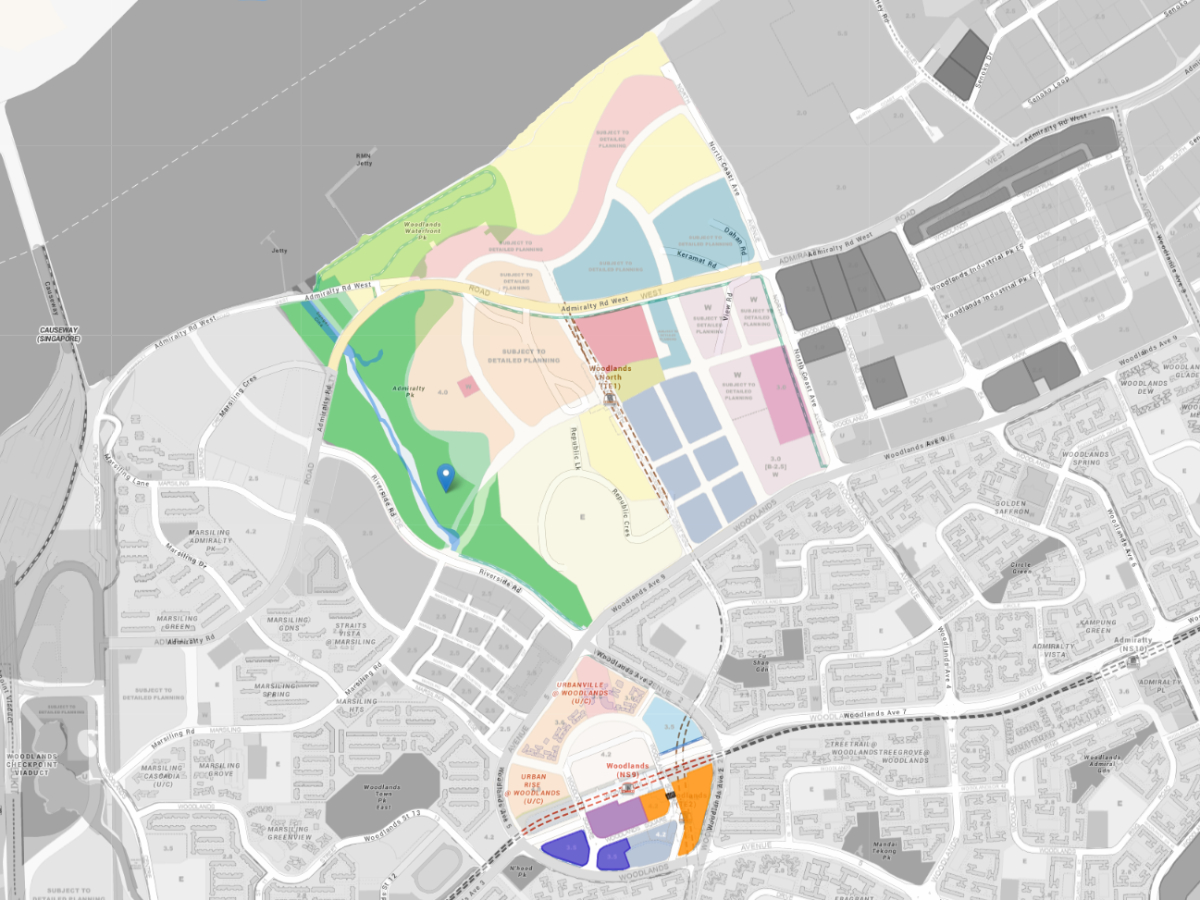
Source: URA, ERA Research and Market Intelligence
First announced by then-Minister for National Development Khaw Boon Wan, Woodlands Regional Centre is collectively comprised of 100ha of developable land sub-divided into two precincts: Woodlands Central and Woodlands North Coast.
Woodlands Central– A Thriving Community and Business Node
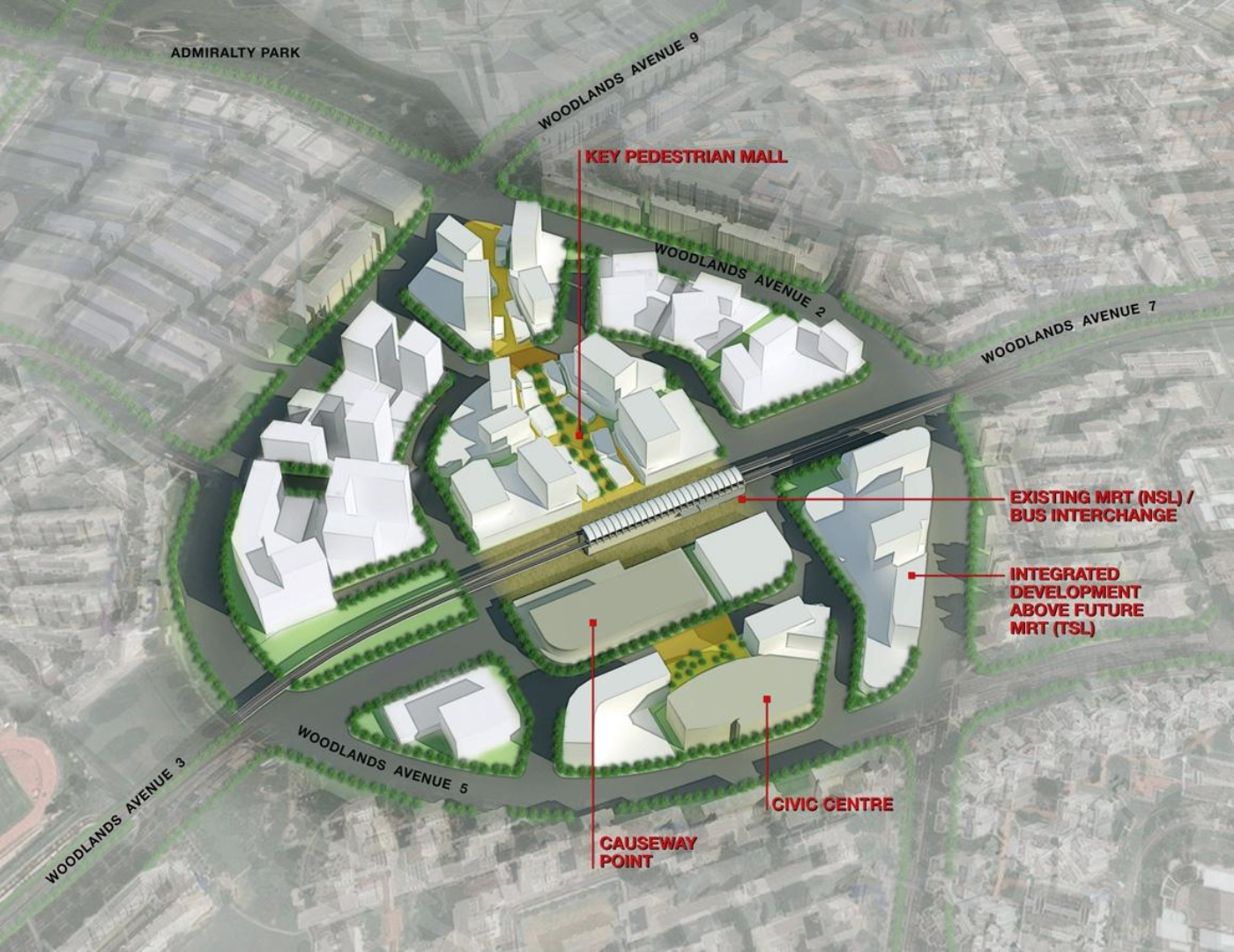
Source: URA
Envisioned as a new lifestyle and commercial hub, Woodlands Central is slated to house a range of office spaces, retail malls, entertainment options, and residential developments.
The precinct’s 30ha teardrop-shaped site also encompasses existing key destinations in the neighbourhood. These include Causeway Point shopping centre, Woodlands Civic Centre, as well as Woodlands MRT station.
To support the residential needs of future residents, Woodlands Central was also announced in 2017 to be one of three towns to receive an injection of new HDB flats. As part of the third phase of the ‘Remaking Our Heartland’ (ROH) programme, Woodlands will see 10,000 new units built at developments sited near Woodlands Central and Woodlands North Coast.
Woodlands North Coast – Housing Precinct and Economic Hub by the Waterfront
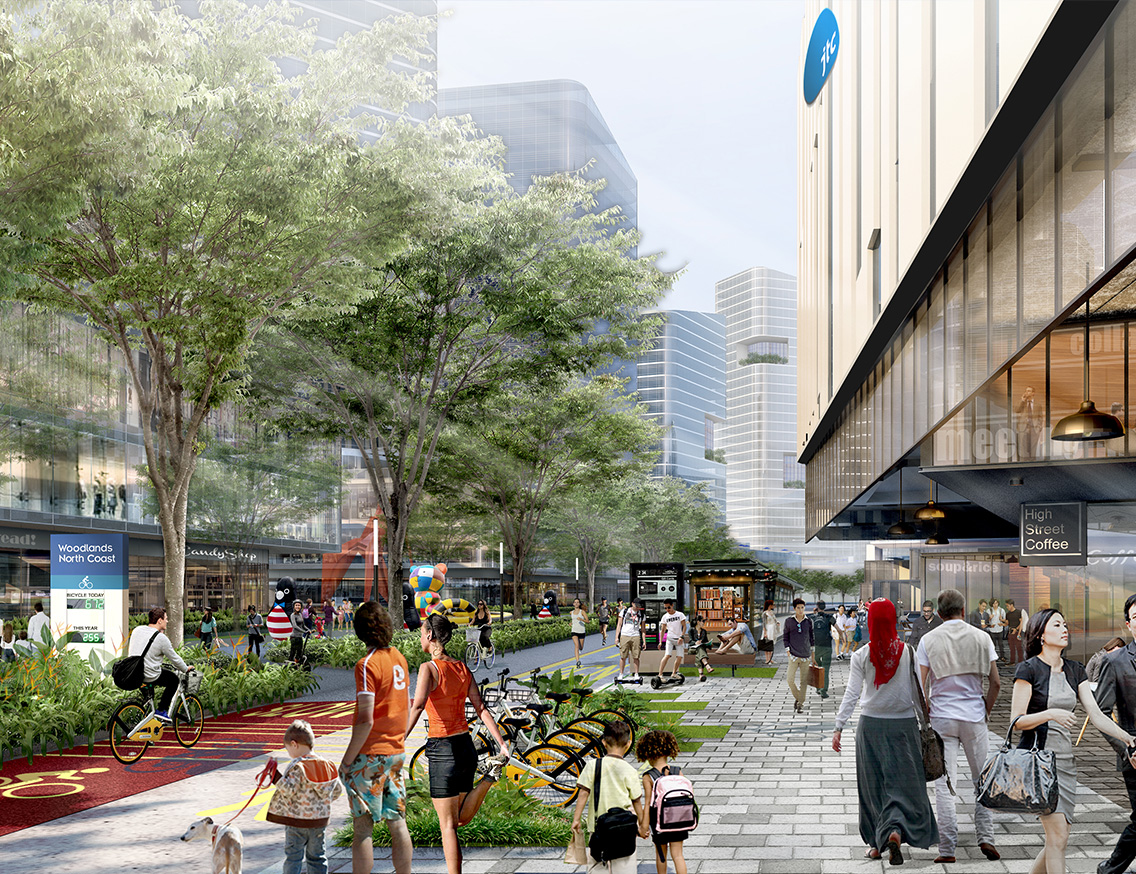
Source: JTC
Woodlands North Coast, on the other hand, spans across a larger 70ha plot located further up of Woodlands Central, putting it in close proximity to Republic Polytechnic, and more crucially, the Woodlands waterfront. This location positions it as a gateway to Malaysia, while also setting the stage for future coastal residential projects in the neighbourhood.
In 2013, plans for the North Coast Innovation Corridor (NCIC) were announced as well. Stretching from Woodlands to Punggol, this planned commercial belt will see Woodlands Regional Centre coming to the fore as Singapore’s primary business park cluster in the North with the potential to provide as many as 100,000 new jobs upon its completion.
What’s happening at Woodlands Regional Centre presently?
At present, plans to rejuvenate Woodlands Regional Centre are well underway, with several key milestones from its Master Plan already successfully met during the intervening years since it was initially announced in 2014.
Woodlands Central: New office spaces and homes for residents
In 2020, Woodlands witnessed the opening of Woods Square, its first mixed-use development featuring Grade A office spaces. Jointly developed by Far East Organisation, Far East Orchard, and Sekisui House, Woods Square comprises four commercial towers with a total of 494 office units and 39 retail units.
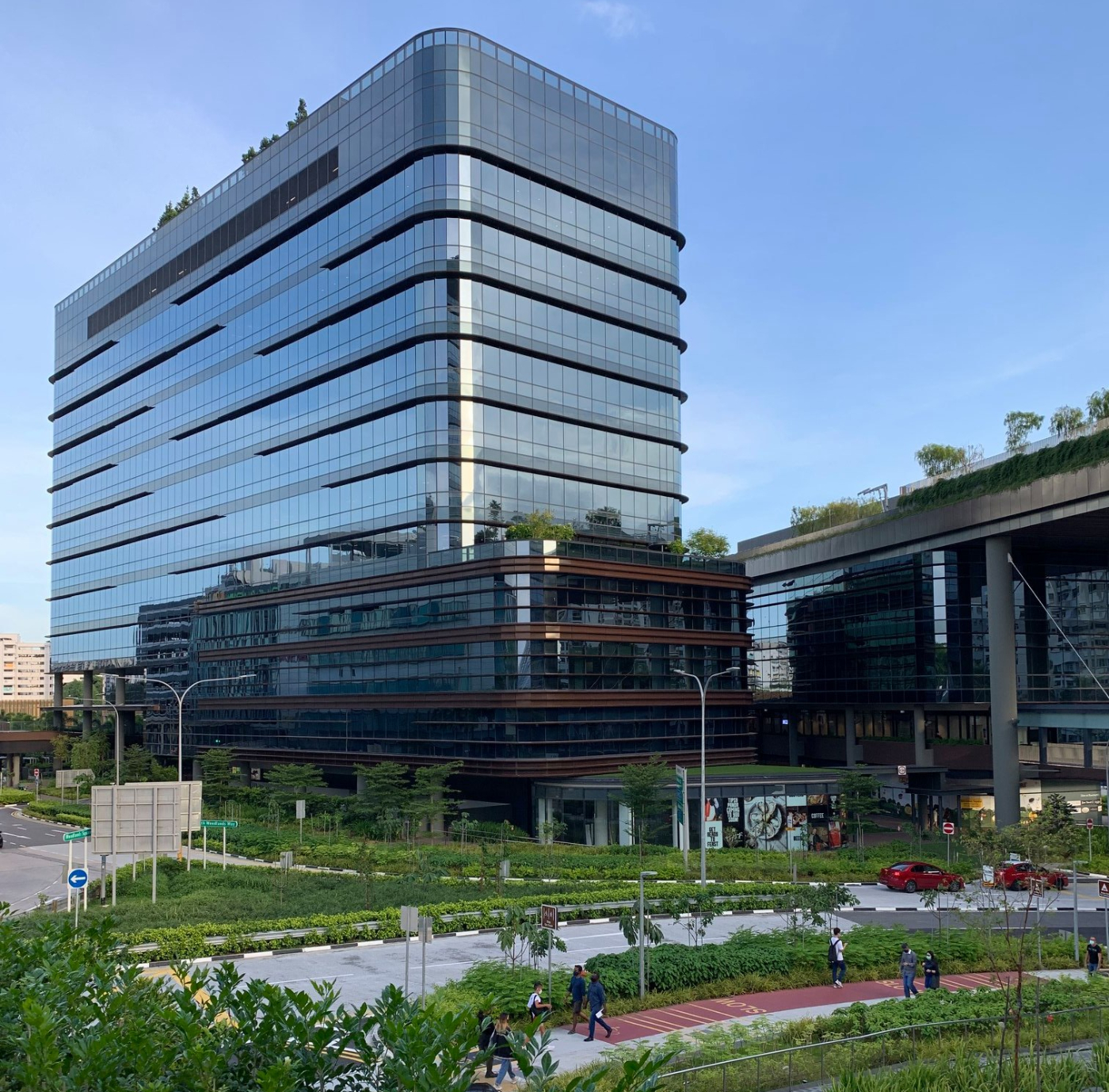
Source: JTC
Apart from providing businesses a viable location for setting up branch offices in North Singapore, Woods Square’s debut also complements the Government’s aim to decentralise employment centres by bringing employment opportunities and office amenities closer to suburban towns away from the city core.
Relating to this objective, two Build-to-Order (BTO) projects have already been launched in the Woodlands Central precinct: UrbanVille @ Woodlands (1,785 units) and Urban Rise @ Woodlands (848 units). UrbanVille was introduced during August 2020’s BTO exercise and is expected to be completed by 2026. On the other hand, Urban Rise, launched in December 2023, is slated for completion in 2028.
Woodlands North Coast: Fresh opportunities and infrastructure for businesses
Though it may be some time before Woodlands North sees BTO flats of its own along the country’s northern coastline, the area has experienced growth in other areas, particularly in its industrial capabilities. This progress will contribute to the NCIC’s goal of transforming Singapore’s northern coast into a vibrant commercial hub brimming with new technologies and ideas.
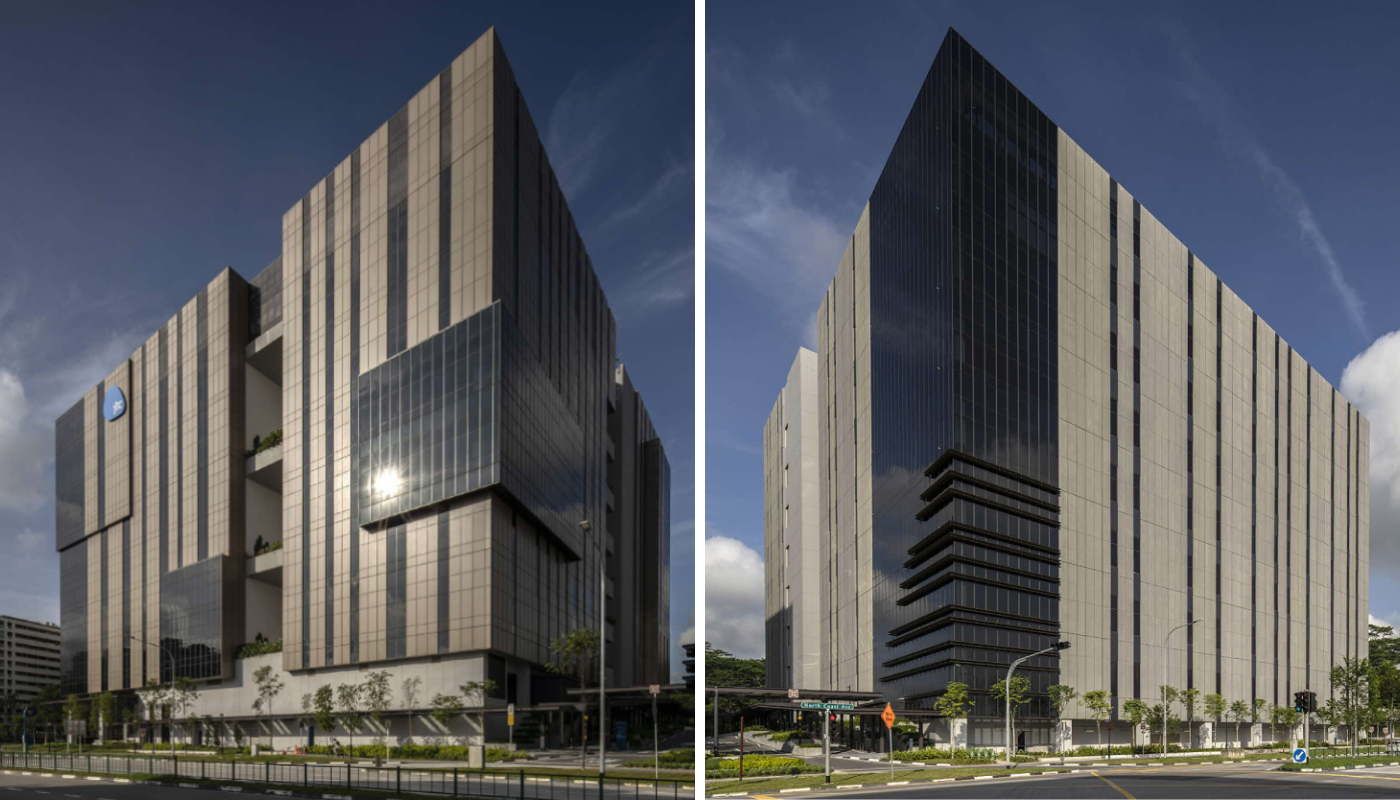
Source: JTC
Industrial projects completed by Jurong Town Corporation (JTC) thus far, such as 1 North Coast and 7 North Coast, represent a progressive step forward to realising this vision.
Both developments offer unique advantages for Singapore businesses; while 1 North Coast’s flexible zoning of 30-70% allows for both manufacturing and non-industrial functions to be housed under the same roof, 7 North Coast is optimised to serve as a strategic hub for industrialists operating locally and regionally.
Thus far, notable companies with a presence at Woodlands North Coast include Micron, a semiconductor giant with global reach, and Illumina, a biotechnology firm and manufacturer of DNA sequencing machine technology.
Woodlands Health Campus: A dedicated healthcare complex in the North
In addition to the developments mentioned above, 2014 also marked the announcement of the Woodlands Health Campus—the town’s first-ever public hospital to be constructed on a 7.7ha site near the then-upcoming Woodlands South MRT station.
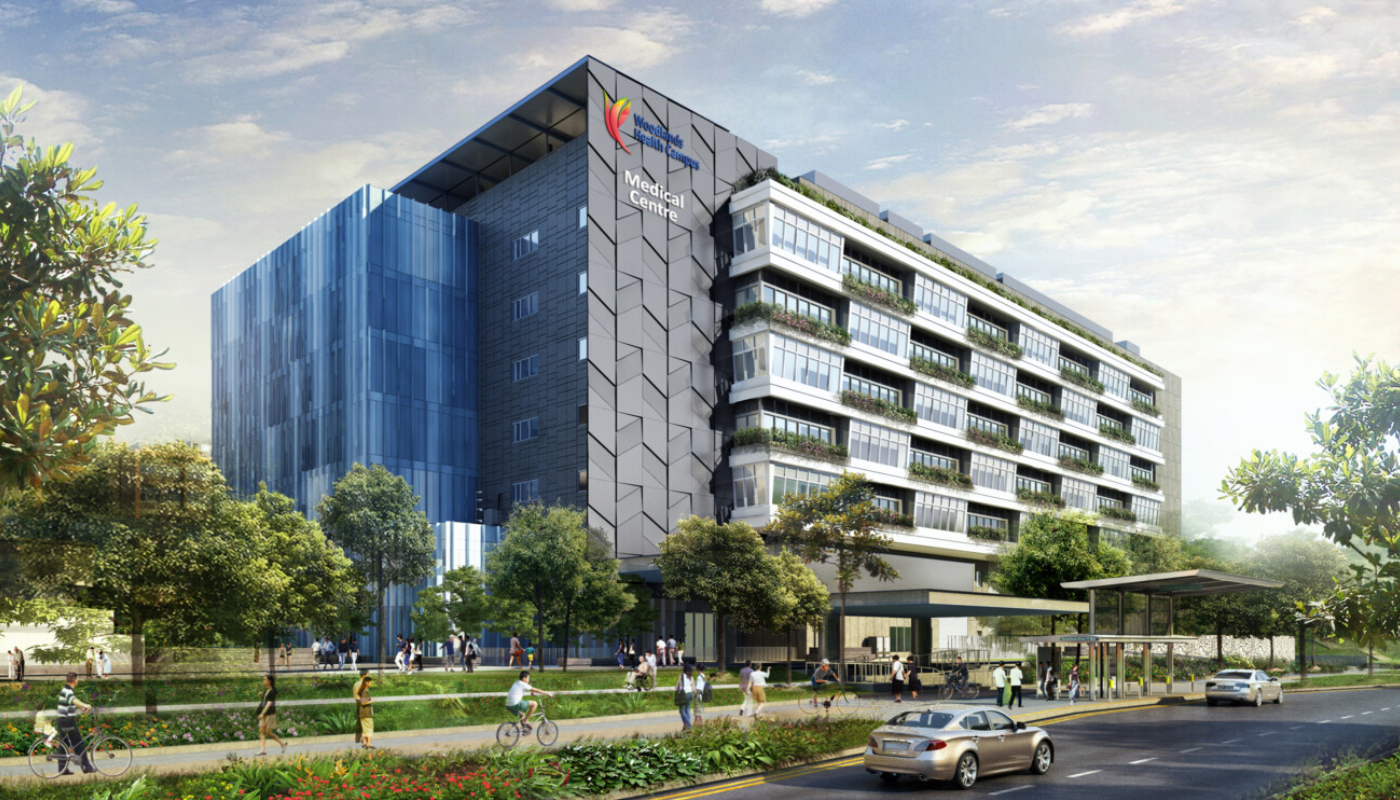
Source: Woodlands Health Campus
Plans were laid out for Woodlands Health’s creation to address the healthcare needs for the North Region’s growing population, with a focus on providing access to acute, community, and elderly care services.
Close to a decade later, Woodlands Health welcomed its first patients in December last year. Though only specialist outpatient clinics and a limited number of community hospital beds were made available during the first phase of its opening, the hospital has since fully opened the rest of its facilities as of May 2024, ranging from critical care units to a healing ‘Parkland’ designed in collaboration with the National Parks Board.
Thanks to its interconnected medical spaces, Woodlands Health is able to implement an innovative care model. Such an approach enables patients to access a full spectrum of health services—including medical examinations and rehabilitation—without needing to visit different hospitals for follow-up treatments.
In total, Woodlands Health houses 1,000 acute and community beds, along with nearly 400 beds in its long-term care tower. The hospital’s infrastructure allows it to expand its capacity to up to 1,800 beds in response to future demand and/or bed crunches as well.
Improved transportation links: North-South Corridor and Thomson-East Coast MRT Line
Beyond the improved precincts and healthcare facilities, URA’s Master Plan 2014 envisioned Woodlands as a well-connected regional hub following the development of two key transportation projects: the Thomson-East Coast Line and the North-South Corridor.
A key component in enhancing Woodlands’ transportation network, the Thomson-East Coast Line (TEL) will introduce three new MRT stations: Woodlands North, Woodlands (TEL extension), and Woodlands South.

Source: LTA
As of January 2020, all of the abovementioned stations are open to the public. Collectively, these new stops provide end-to-end train connectivity for the entirety of the Woodlands Regional Centre, while also giving residents a new direct route from their homes to the heart of Singapore’s downtown business core.
Similarly, the North-South Corridor (NSC) is set to enhance multi-transport access, offering not just an improved vehicular route, but also a smoother commute for cyclists and pedestrians traveling downwards from the upper reaches of Singapore.
Initially envisioned as the North-South Expressway in 2011, this 21.5km vehicular route was re-designed into its current form comprising a viaduct, a tunnel, as well as ground-level streets. Doing so would allow more space to be allocated towards pedestrian corridors, including footpaths, cycling routes, priority lanes for public transport, and even green community spaces.
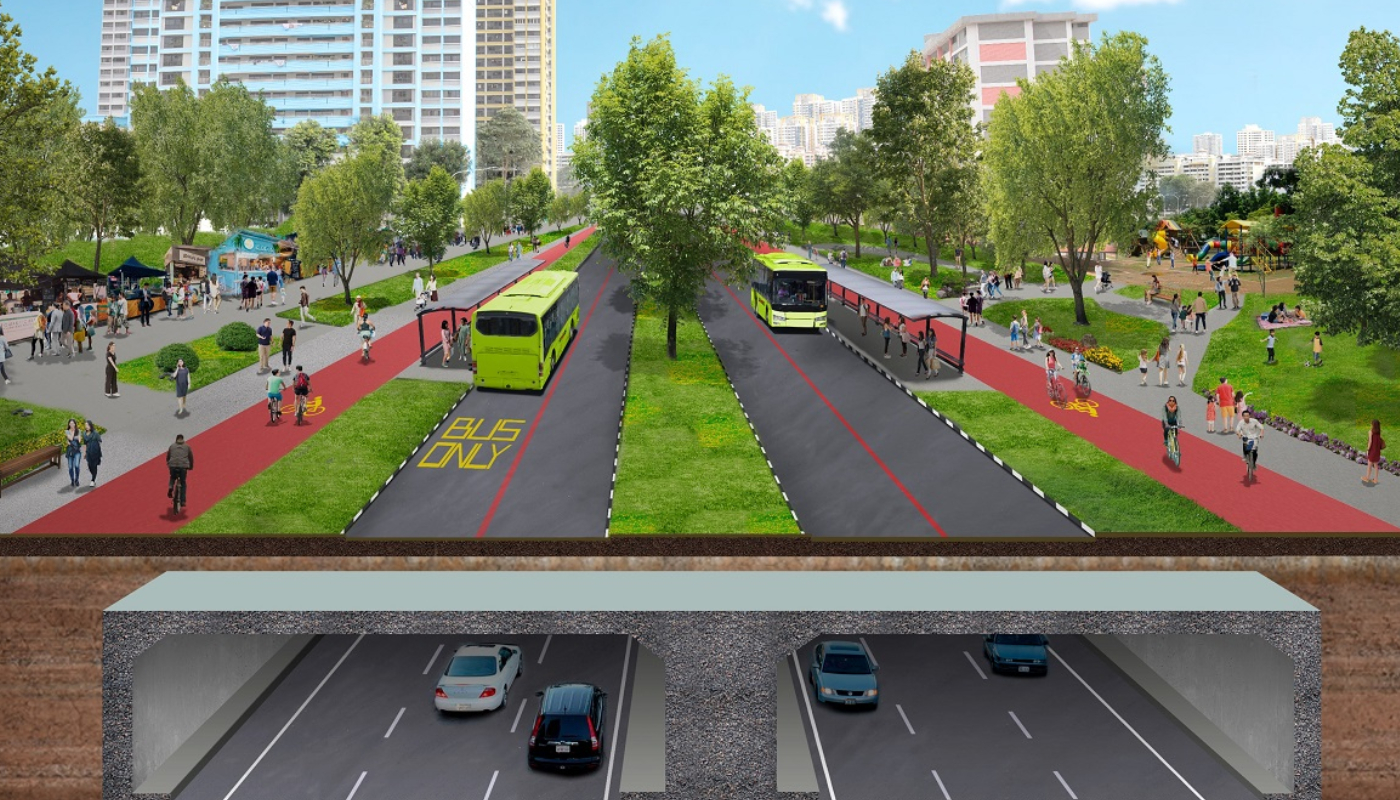
Source: LTA
At present, the NSC is still under construction and it is slated to open in phases starting from 2027, with the viaduct from Admiralty Road West to Lentor Avenue being the first section to become operational.
Once it’s fully completed, the NSC will streamline travel to and from the city, thus relieving road congestion and improving commute times for residents living in towns situated along Singapore’s North-South transport spine—Woodlands included.
What’s next for Woodlands?
Beyond the projects outlined in past and present Master plans, further developments are on the horizon for Woodlands and its surrounding areas.
For starters, the upcoming Johor Bahru-Singapore Rapid Transit System (RTS) will aid cross-border travel by offering a fast and efficient alternative to the Causeway by end-2026. This new Light Rail Transit (LRT) system connects Woodlands North Station to Johor’s Bukit Chagar Station, and is capable of accommodating up to 10,000 commuters per hour in each direction during peak travel periods.
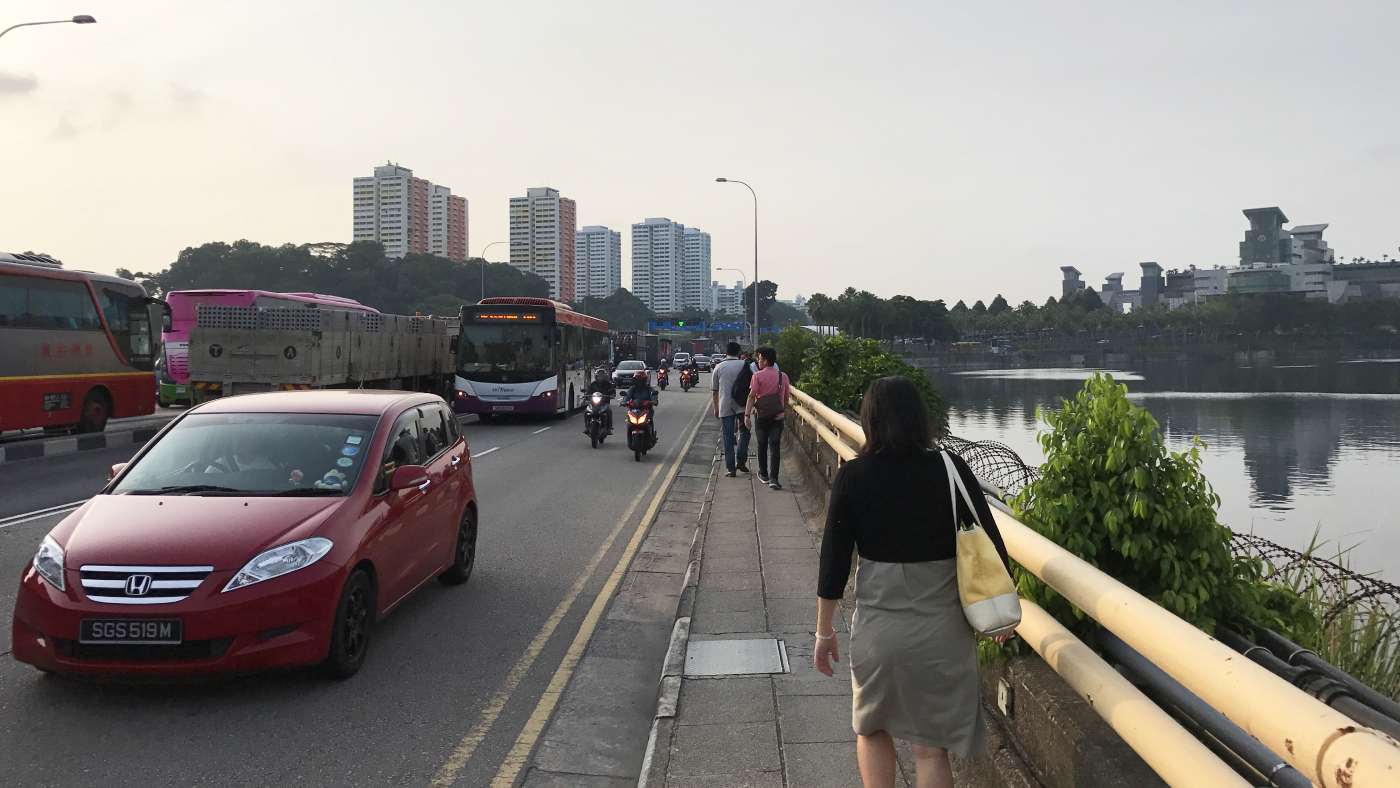
In 2025, works to expand Woodlands Checkpoint to five times its current size will also commence, bringing it from 19ha to 95ha with redeveloped infrastructure at the Old Woodlands Town Centre. The future extension is set to become fully operational by 2032, contributing to faster customs clearance times, while relieving congestion from high traffic volumes.
Viewed collectively with ongoing Master Plan initiatives, these projects will strengthen Woodlands’ position as the North’s primary regional centre, hence potentially spurring property growth in the area as well.
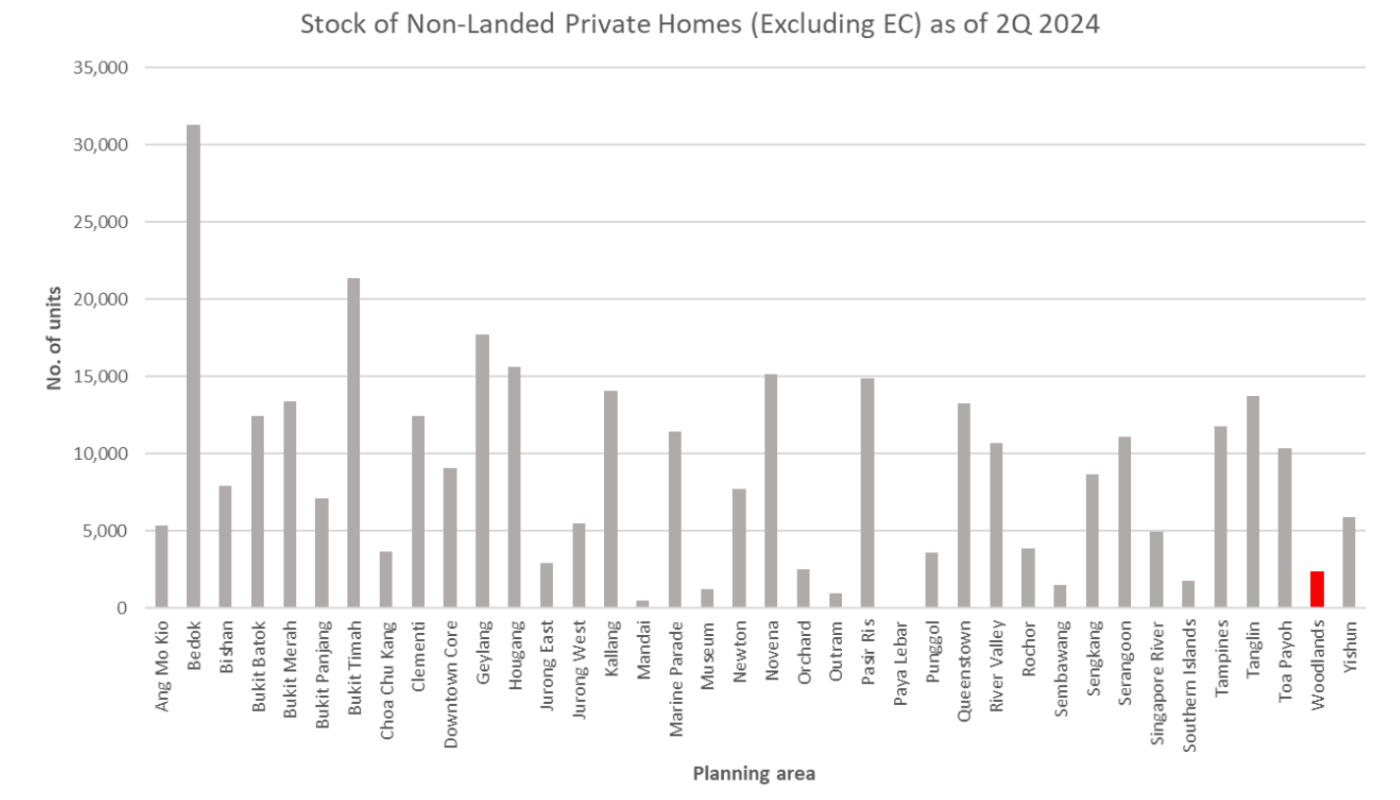
Source: URA Realis, ERA Research and Market Intelligence
While Woodlands currently has one of the lowest inventories of non-landed private homes (excluding executive condominiums) among the various planning areas in Singapore as of 2Q 2024, the upcoming launch of Norwood Grand, a 348-unit, 99-year leasehold development, is set to provide a timely injection of brand-new stock in the area.
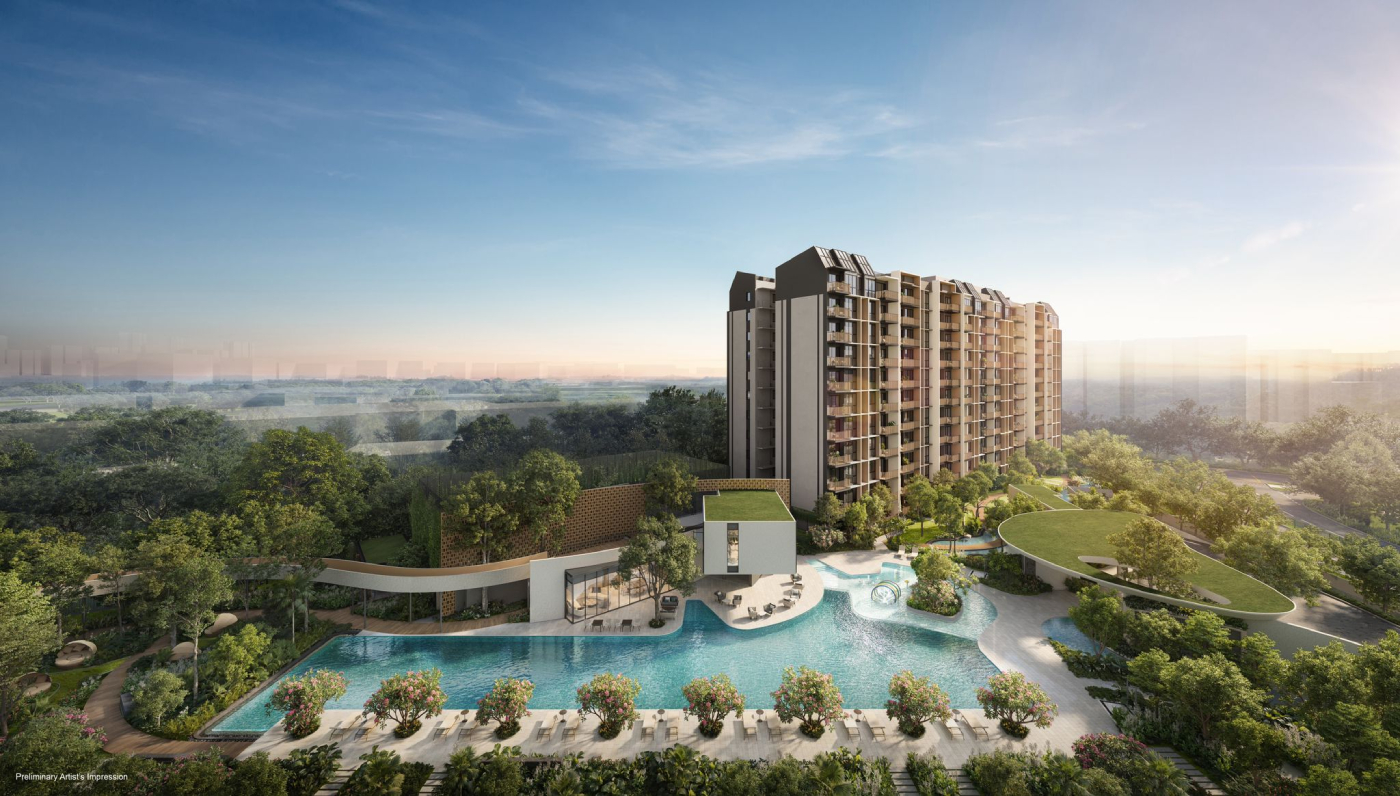
Source: City Developments Limited
As such, homebuyers, particularly those keen on a private condo, may find Woodlands appealing as a promising location.
With additional private and public housing, new infrastructure, and transportation upgrades on the horizon, Woodlands is poised for future growth and development in more ways than one.
Not only do these projects aid in unlocking Woodlands’ potential as a highly desirable town for residents, they’ll also set the stage for its eventual transformation into a dynamic industrial hub – one where businesses are able to expand their operations, both within and beyond Singapore’s borders.
Disclaimer
This information is provided solely on a goodwill basis and does not relieve parties of their responsibility to verify the information from the relevant sources and/or seek appropriate advice from relevant professionals such as valuers, financial advisers, bankers and lawyers. For avoidance of doubt, ERA Realty Network and its salesperson accepts no responsibility for the accuracy, reliability and/or completeness of the information provided. Copyright in this publication is owned by ERA and this publication may not be reproduced or transmitted in any form or by any means, in whole or in part, without prior written approval.
Older flats, once considered less desirable due to their age, have gradually become more prominent in the resale market. If you are thinking of buying one, beware of hidden costs like maintenance and repairs that could catch you by surprise.
In recent years, we’ve witnessed an interesting shift in the HDB resale market in recent years—an increasing number of homeowners are turning their attention to older flats, specifically those that are at least 40 years old.
Rising Proportion of Older Flats Resold
One look at HDB resale transactions from 2021 will show a significant uptick in older flats resold. In the 1H 2021, 2,266 older flats were transacted, a figure that has since surged to 3,150 units in 1H 2024. In 3Q 2024, 1,817 older flats were transacted.
Proportionally, older flats made up about 17% of resale transactions in 2021. However, this proportion has since rose to 22.8% in 1H 2024, and 24.7% in 3Q 2024.
Chart 1: HDB Flats Resold by Age

Source: data.gov.sg as at 26 Sept 2024, ERA Research and Market Intelligence
Older Flats Are Commonly Found in Popular HDB Towns
The majority of older flats are predominantly found in HDB towns established since the 1970s. Consequently, it’s not surprising to see towns such as Bedok, Ang Mo Kio, Toa Payoh, Bukit Merah, Jurong West, and Kallang/Whampoa reporting some of the highest volumes of older flats being resold. On top of which, many of these mentioned towns are heartlands favoured by Singaporeans.
These towns often have town centres which feature established amenities. Additionally, they often benefit from existing infrastructure such as MRT stations or bus networks. The culmination of these conveniences makes these estates attractive to homebuyers of all age groups and demographics.
Table 1: Towns With At Least 300 Older Flats Resold In the First Nine Months of 2024

Source: data.gov.sg as at 26 Sept 2024, ERA Research and Market Intelligence
A Growing Number of Older Flats
As of 2024, Singapore has approximately 335,000 older flats that are 3-room and larger. Considering the total of 1.13 million HDB flats today, these older flats account for roughly a third of this figure.
But by 2030, the number of older flats is projected to increase to 502,000 units, making up a whopping 40% of the overall HDB flat inventory!
The number of older flats is expected to rise further over the long term. Even the government has previously cautioned home buyers in 2017, not to assume that all old HDB flats will be automatically eligible for the Selective En bloc Redevelopment Scheme (SERS).
SERS is an exercise where old HDBs are acquired by the government and redeveloped to make better land use in modern land-scarce Singapore.
Following strict valuation principles, older flats should be priced more affordably with their shorter lease. This makes economic sense, and can benefit buyers who do not need the full 99-year lease. But this may not be the case for the Singapore’s buoyant housing market.
Older Flats May Not Necessarily Translate to Cheaper Homes, but Can Be Considerably More Affordable Compared to Newer Flats within the same Town
The price disparity between newer and older flats varies across towns. However, if you’re determined to stay in a particular town and have a smaller budget, older flats may be your best option.

By studying HDB transactions in 1H 2024, we can see the wide price disparity between older and newer flats in each township. Popular towns in the city fringe such as in Toa Payoh and the Central Area saw newer 4-room flats being resold at nearly double the price of older flats.
Conversely, towns such as Yishun and Hougang measured a narrower price gap between newer and older flats.
Table 2: Median Price of Flats Sold in Jan – Sep 2024

Source: data.gov.sg as at 26 Sep 2024, ERA Research and Market Intelligence *Only towns with transactions for both older and newer flats in Jan-Sep 2024 were included.
Who Are Buying These Older Flats?
The buyers of older flats come from diverse backgrounds, but they share a common reason for purchasing their older flats. And that is to buy an affordable home in their preferred heartland.
But if we were to further break them down by housing needs, we observe five key buyer profiles in the market:
- Younger Buyers Staying Close to Parents: Many younger buyers are opting for older flats in established estates to stay close to their parents, to care for their elderly parents and to take advantage of the support systems.
- Familiarity and Comfort: Some younger buyers, having grown up in these estates, are familiar with the area valuing the sense of community and continuity.
- Right-Sizing Older Buyers: Older homeowners looking to downsize often choose to stay within the same neighbourhoods, where they have established roots and are familiar with the amenities.
- Amenities Appreciation: Buyers are drawn to the well-developed amenities available in older, more established estates, which often surpass those in newer neighbourhoods.
- Spaciousness: Older flats are known for their larger floor areas compared to newer developments, a feature that many buyers appreciate, especially in a work-from-home era.
Here Are Some Important Aspects of Older Flats to Consider
Shorter Physical Lease
Assuming older flats are at least 40 years old, they could offer owners up to another 59 years of residency. The shorter remaining lease may be a concern for young families, especially if they plan to stay long-term and their flat’s lease runs out.
And if one hopes to strike the jackpot with SERS, the odds could be slim as the government is unlikely to put all older homes under SERS.
Mortgage
Unless you are planning to pay for your flat in full, most Singaporeans will require a mortgage loan and the use of their CPF funds. But to leverage on that, the remaining lease of the flat and the age of the buyers will be critical considerations.
In the case when the remaining lease of the flat can cover the youngest buyer to the 95 years, these buyers will typically be allowed:
- To withdraw their CPF funds to the valuation limit if the remaining lease is more than 20 years,
- And granted a Loan-to-Value (LTV) limit 90% and loan tenure of 25 years or shorter.
But the complexity arises if remaining lease of the flat is unable to cover the youngest buyer to the 95 years. Under such scenarios, the valuation, LTV limit and loan tenure will be pro-rated accordingly.
That said, other factors such as your credit rating, outstanding debt (car, education loans) that can affect the mortgage terms. Therefore, it is important to check in with your bankers for clarity!
Physical state of the flat could require extensive renovation
As these older flats were developed a long time ago, they tend to show signs of their age, or are fitted with older fixtures. Money might have to be spent to upkeep the flat and refresh it with modern features.

Of course, you could go for a newly renovated older flat – but they often come at a premium due to the renovation costs incurred by their previous owners.
Less conducive environment
Apart from the interior of the flat, buyers may have overlooked the environment which is essential to a pleasant living experience
For instance, the facades of older flats are subject to prolonged weather influences and are difficult to maintain. Next, designs of older flats are dated, so it is common to see things like narrower corridors or even slower lifts could also pose as daily challenges to residents.

As newcomers, new homeowners are expected to be more accommodating to their neighbours, who are likely long-term residents. And because of that, these long-term residents may feel entitled to extend their storage spaces into the common areas, resulting in clutter and encroaching to another neighbours’ space. In extreme cases, these could become fire hazards.
So, What’s Next for Older Flats?
Looking ahead, the demand for older flats is likely to remain strong, particularly among buyers on a tighter budget and who prioritise larger living spaces, better amenities, and central locations.
While such flats are alluring, homebuyers will need to exercise due diligence in buying flats with shorter leases, ensuring that they have sufficient lease to cover their housing needs.
Additionally, buyers should be aware of the hidden costs associated with the deteriorating physical condition of the flats and the less-than-conducive environment, both of which are crucial to ensuring a pleasant living experience.
That said, it is unreasonable to expect all the older flats to undergo SERS, and therefore we can expect more older flats to be put up for sale in the market. The growing number of older flats being resold will likely lead to a more diverse resale market, but it also underscores the importance of for buyers to make informed decisions when purchasing these properties.
Disclaimer
This information is provided solely on a goodwill basis and does not relieve parties of their responsibility to verify the information from the relevant sources and/or seek appropriate advice from relevant professionals such as valuers, financial advisers, bankers and lawyers. For avoidance of doubt, ERA Realty Network and its salesperson accepts no responsibility for the accuracy, reliability and/or completeness of the information provided. Copyright in this publication is owned by ERA and this publication may not be reproduced or transmitted in any form or by any means, in whole or in part, without prior written approval.
Bukit Timah is traditionally known to be a prime residential area consisting predominantly luxury private condominiums and landed homes, as well as being located near the Core Central Region (CCR). But this could soon change over the next 20 to 30 years.
So you see, the Urban Redevelopment Authority (URA) and the Housing & Development Board (HDB) has announced a development plan on May 2024 that will see the Bukit Timah Turf City being redeveloped into a new residential estate.
More importantly, Bukit Timah will see the inclusion of Build-to-Order (BTO) flats for the first time in almost 40 years!
Here is what you need to know about this upcoming estate.
Bukit Timah Turf City had a colourful past
Spanning 176 ha, Bukit Timah Turf City was once an area dedicated to sports and recreational activities, and most notably horse racing. Known formerly as the ‘Singapore Turf Club’, the site was used for horseracing from 1933 to 1999, and was a popular haunt for avid punters for over 66 years,
According to the Minister of National Development Desmond Lee, “the site was zoned for residential use since 1998, but was leased out for lifestyle and recreational use until the end of 2023”.
Since then, Bukit Timah Turf City has been home to a several sports associations such as a saddle club, country clubs, commercial spaces, and other sporting facilities.
When the Singapore Turf Club shifted to Kranji, the site transformed into a shopping complex serving the immediate residents of the private residential enclave.

Football match held at Turf Club
Why the Need to Redevelop Turf City?
Currently, the piece of land that was once home to Singapore Turf Club is not being utilised well, and has a high redevelopment potential to make the area lively like it once was. Additionally, Bukit Timah is made up predominantly of private residential properties, available only to a select few, which has cultivated the area’s reputation as a prestigious neighbourhood for the wealthy.
Thus, through integrating public and private housing in the upcoming housing estates, this will foster inclusivity among people of different financial background and help breakdown any stereotypes of the area. Furthermore, those working or schooling in the area would be interested in affordable properties that are conveniently located in an esteemed neighbourhood.
Diversify housing options in Bukit Timah
This area, together with the rest of Bukit Timah, is widely perceived as exclusive due to the surplus of private residential properties there, and its central and accessible geographical location.
Therefore, a greater diversity of housing types would be beneficial to a wider group of people who are looking to live in a centrical location nearer to their workplaces, schools and the CCR. Furthermore, by introducing public housing in this area will allow children from diverse backgrounds to attend popular schools in the area.

Better amenities and connectivity
Bukit Timah Turf City’s rich history can be seen in the many buildings and structures that represent the former Turf Club’s distinct aspects, and will be studied for retention and repurposing to integrated it with the new residential enclaves in the future.

Artist’s Impression of a repurposed Fairways Quarters and community space.
Other amenities will include recreational spaces and sports facilities, that will bring convenience to users and at the same time, showcasing the area’s distinct past. The new neighbourhood will be built around the former grandstand and the current oval shaped open space will be retained for recreational purposes.
As for transport nodes, Bukit Timah Turf City currently has no bus services, and the nearest MRT station is Sixth Avenue. Therefore, improving the connectivity of Bukit Timah Turf City with new bus services and MRT lines would benefit both new and existing residences living in that area.
What Can We Expect with the Upcoming Estate
Bukit Timah Turf City is expected to yield 15,000 to 20,000 residential homes, both private and public, across four distinct neighbourhoods, namely Racecourse Neighbourhood, Stables Commune, Saddle Club Knolls and Tinggi Hills.

Map of the 4 new neighbourhoods in Bukit Timah Turf City
To cater to the needs of future residents, these neighbourhoods will feature open public spaces integrated with historic buildings and structures, a variety of amenities including shops, community and recreational facilities, as well as improved transport connections.
Additionally, the Bukit Timah Turf City is planned to be car-lite, pedestrian friendly and well-served by public transport. Due to this, there will be fewer spaces dedicated to car parking to free up space for more greenery and community spaces.
Improved connectivity
The area is currently served by Sixth Avenue MRT Station on the Downtown Line (DTL), which is 15 minutes away from the site. By 2032, Turf City will have its own MRT station on the upcoming Cross Island MRT Line. Residents will be within a 10-minute walk from either MRT station, increasing convenience and connectivity between Bukit Timah Turf City and the rest of the island, without the need for a private vehicle.
Furthermore, new bus services may also be added to allow future residents to have more choices when travelling within and outside the Bukit Timah Turf City estate.

Road improvement works will also be carried out along Dunearn Road, Bukit Timah Road and Eng Neo Avenue to accommodate anticipated traffic to and from future developments at Bukit Timah Turf City. Concurrently, a study is being conducted on the technical feasibility and impact of implementing a new exit ramp from the Pan Island Expressway (PIE) towards Tuas at Bukit Timah Turf City.
BTO flats in Bukit Timah could be a’ golden ticket’ to enter popular schools
After almost 40 years, URA and HDB has announced that HDB flats will be included in this area. The inclusion of HDB flats aims to provide a more affordable housing option for Singaporeans who wish to live in this area.
Existing HDB flats are older and area limited in supply
For HDB buyers looking to stay at Bukit Timah, their only option will be the flats at Toh Yi Gardens estate. With an estimated 2,555 HDB flats in Bukit Timah which were built in 1988, HDB flats in Bukit Timah Turf City will definitely be of high demand, given the area’s prestigious and convenience, as well as the presence of several notable schools in the area.

HDB Transactions At Toh Yi Drive (1H 2024)
Parents with young kids will also be eyeing future properties in Bukit Timah Turf City in hopes of securing a placement in popular schools in the vicinity.
Looking at OneMap, assuming there are BTO flats located on the former Grandstand, they could potentially fall within 1-2km radius of popular schools like Methodist Girls’ School, Pei Hwa Presbyterian Primary School, and Raffles Girls’ Primary School.

Map of schools within 1km of Bukit Timah Turf City
In Closing
Once deemed as a place that is out of reach for most Singaporeans to live in, the upcoming HDB flats in Bukit Timah Turf City will provide a more diverse living community in Singapore. Both current and new residents will benefit from the new amenities, especially the improved connectivity to the rest of the island via public transport links. “Un-priming” the area can bring about a more equitable community.
That said, existing residents may be may expose to some inconvenience from the upcoming construction works. Regardless of that, existing residents will benefit from the future development in the vicinity.
So, would you consider making Bukit Timah Turf City your next home?
Disclaimer
This information is provided solely on a goodwill basis and does not relieve parties of their responsibility to verify the information from the relevant sources and/or seek appropriate advice from relevant professionals such as valuers, financial advisers, bankers and lawyers. For avoidance of doubt, ERA Realty Network and its salesperson accepts no responsibility for the accuracy, reliability and/or completeness of the information provided. Copyright in this publication is owned by ERA and this publication may not be reproduced or transmitted in any form or by any means, in whole or in part, without prior written approval.
For almost anyone doing it for the first time, buying a home in Singapore can be a confusing process. Throw in a bunch of acronyms, like ABSD (Additional Buyer’s Stamp Duty) and MOP (Minimum Occupation Period), and things can get baffling real quick. However, if you’re intending to take out a loan on a new home purchase, two terms that you’ll absolutely need to know are TDSR and MSR.
In their full form, TDSR stands for ‘Total Debt Servicing Ratio’, whereas MSR means ‘Mortgage Servicing Ratio’, and they’re both Government initiatives to promote responsible borrowing. Below, we explain how TDSR and MSR came about, their purpose, and how to determine your housing affordability using both ratios.
What exactly are TDSR and MSR? And how did they come to be?
Introduced by the Monetary Authority of Singapore (MAS) in 2013, the TDSR is a framework applying to all property loans extended by banks to borrowers. Its rollout is to promote prudency amongst individuals taking loans, so that they don’t end up borrowing more than they could afford.

Therefore, the TDSR, which limits debt repayments to a certain percentage of gross monthly income, is first and foremost a safety net. When the TDSR was first introduced in 2013, borrowers were allowed to spend up to 60% of their gross monthly income on loan servicing.
Subsequently, that limit was tightened to 55% in 2021. Put differently, this means that under TDSR guidelines, a borrower should have a total debt value of under 55% of his or her monthly salary to be able to take out a mortgage.
Similarly, for the MSR, it places a cap on the percentage of monthly income that borrowers can use for mortgage repayments. In 2013, the MSR threshold was set at 30% for HDB flat purchases that are financed by bank loans, and it has stayed that way since.
How are TDSR and MSR applied differently for home purchases?
If there’s a key difference between TDSR and MSR that’s worth highlighting, it’s that TDSR applies to all types of housing loans, whereas MSR applies only to loans for buying an HDB flat OR an Executive Condominium (EC) that still hasn’t completed its MOP.
Hence, supposing that you’re a homebuyer who wishes to take out a home loan for an HDB flat or EC purchase, you’ll have to comply with both the MSR and TDSR limits. The differences of both ratios are summarised in the table below.
Table 1: Summary of the differences between TDSR and MSR
| TDSR | MSR | |
| Definition | Refers to the portion of a borrower’s gross monthly income that goes towards repaying the monthly debt obligations, including the loan being applied for | Refers to the portion of a borrower’s gross monthly income that goes towards repaying all property loans, including the loan being applied for |
| Properties that this loan applies to | All property types | HDB flats and ECs only |
| Threshold | 55% of borrower’s gross monthly income | 30% of borrower’s gross monthly income |
| Debt Obligations included | All debt obligations (e.g. Car loans, student loans) | Only property loans (Including the one being applied for) |
| How it is calculated | TDSR = (Total monthly debt)/(Gross monthly income) x 100% | MSR = (Total monthly mortgage repayment(s))/(Gross monthly income) x 100% |
It’s also worth bringing up (again) that both TDSR and MSR account for different financial considerations. TDSR factors in all of a borrower’s unsettled debt, including loans taken out for housing, cars, education, credit cards, and so forth.
In comparison, MSR is more straightforward as it’s solely calculated on a borrower’s monthly income. For borrowers buying an HDB or EC unit, their household monthly income will first be assessed using the MSR on their loan quantum to calculate the maximum amount they can repay monthly.
Thereafter, buyers will be further subject to a second round of assessment, which will consider all their debt repayments are within the TDSR limits. Should the borrowers have outstanding debts such as car loans, it may affect the amount they borrow and they may not get the maximum MSR loan amount.
How do you calculate MSR based on your household income?
In general, a borrower’s MSR can be derived by dividing their total monthly mortgage repayments by their gross monthly household income.
Assuming Party A has a gross monthly income of $10,000, his MSR calculations would be so…

$10,000 x 30% = $3,000
In another scenario, if Party A has an existing debt of $4,000 and a gross monthly income of $10,000, his MSR calculations would be so…
Maximum MSR loan amount = $10,000 x 30% = $3,000
Maximum TDSR loan amount = $10,000 x 55% = $5,500
Maximum MSR loan amount that can be taken to meet TDSR limit = $5,500 – $4,000 (Existing debt) = $1,500
In other words, even though Party A’s maximum mortgage affordability is $3,000 (based on the current MSR threshold of 30%), their existing debt of $4,000 limits their borrowing capacity to just $1,500.
To gauge the estimated loan quantum a household can secure based on MSR, one can refer to the sensitivity analysis table below. With a monthly household income of $16,000, a family can afford a home of up to $1.01mil, which works out to the price of a 2-room condo in the OCR.
Table 2: MSR Sensitivity Analysis- Based on Value Of Property on Household Income and Mortgage Rates for a 25 Year Loan
| Interest Rates | |||||
| Household Income | Monthly Payment | 3.00% | 3.50% | 4.00% | 4.50% |
| $10,000 | $3,000 | $633,000 | $600,000 | $569,000 | $540,000 |
| $11,000 | $3,300 | $696,000 | $660,000 | $626,000 | $594,000 |
| $12,000 | $3,600 | $760,000 | $720,000 | $683,000 | $648,000 |
| $13,000 | $3,900 | $823,000 | $780,000 | $739,000 | $702,000 |
| $14,000 | $4,200 | $886,000 | $839,000 | $796,000 | $756,000 |
| $15,000 | $4,500 | $949,000 | $899,000 | $853,000 | $810,000 |
| $16,000 | $4,800 | $1,013,000 | $959,000 | $910,000 | $864,000 |
| $17,000 | $5,100 | $1,076,000 | $1,019,000 | $967,000 | $918,000 |
| $18,000 | $5,400 | $1,139,000 | $1,079,000 | $1,024,000 | $972,000 |
| $19,000 | $5,700 | $1,202,000 | $1,139,000 | $1,080,000 | $1,026,000 |
| $20,000 | $6,000 | $1,266,000 | $1,199,000 | $1,137,000 | $1,080,000 |
Source: ERA Research and Market Intelligence (*Rounded to the nearest thousand)
How do you calculate TDSR?
Similar to MSR, it’s possible to derive a borrower’s TDSR with the help of a formula, which is as follows…

So, for instance, if Party B earns a fixed income of $10,000 a month and owes $2,000 in car loans as well as $1,000 in credit card loans, their maximum remaining capacity for monthly mortgage payments, based on the current TDSR threshold of 55%, would be…
Maximum loan based on TDSR limits = $10,000 X 55% = $5,500
Maximum remaining borrowing capacity = $5,500 – car loan ($2,000) – credit card loan ($1,000) = $2,500
However, if a borrower’s income varies from month to month, their TDSR can be slightly trickier to calculate. And that’s because they’re only permitted to use 70% of their gross monthly income for TSDR calculations. Or as MAS puts it: “financial institutions are required to apply a haircut of at least 30% to all variable income (e.g. bonuses) and rental income”.
Therefore, if we’ve Party C who has a similar debt situation as Party B, along with a gross monthly income of $10,000 – consisting of a fixed component of $7,000 and $3,000 in commissions – their TDSR calculations will look like this…
Maximum loan based on TDSR limits = [$7,000 + ($3,000 X 70%)] X 55% = $5,005
Maximum remaining borrowing capacity: $5,005 – car loan ($2,000) – credit card loan ($1,000) = $2,005
To gauge the estimated loan quantum a household can secure based on TDSR, we can refer to the sensitivity analysis table below. Under TDSR, a family earning a monthly household income of $16,000 can purchase a home of up to $2.4mil which is a rough cost for a sizable 3-bedroom OCR condo presently.
Table 3: TDSR Sensitivity Analysis– Max Value of property value based on household income and mortgage rates for a 25 Year Loan
| Interest Rates | |||||
| Household Income | Monthly Payment | 3.00% | 3.50% | 4.00% | 4.50% |
| $10,000 | $5,500 | $1,547,000 | $1,465,000 | $1,390,000 | $1,320,000 |
| $11,000 | $6,050 | $1,702,000 | $1,612,000 | $1,529,000 | $1,452,000 |
| $12,000 | $6,600 | $1,856,000 | $1,758,000 | $1,668,000 | $1,584,000 |
| $13,000 | $7,150 | $2,011,000 | $1,905,000 | $1,807,000 | $1,716,000 |
| $14,000 | $7,700 | $2,165,000 | $2,051,000 | $1,946,000 | $1,848,000 |
| $15,000 | $8,250 | $2,320,000 | $2,198,000 | $2,084,000 | $1,980,000 |
| $16,000 | $8,800 | $2,475,000 | $2,344,000 | $2,223,000 | $2,111,000 |
| $17,000 | $9,350 | $2,629,000 | $2,491,000 | $2,362,000 | $2,243,000 |
| $18,000 | $9,900 | $2,784,000 | $2,637,000 | $2,501,000 | $2,375,000 |
| $19,000 | $10,450 | $2,939,000 | $2,784,000 | $2,640,000 | $2,507,000 |
| $20,000 | $11,000 | $3,093,000 | $2,930,000 | $2,779,000 | $2,639,000 |
Source: ERA Research and Market Intelligence (*Rounded to the nearest thousand)
Scenarios where the TDSR Ratio is not applied
Although it’s safe to say that TDSR and MSR will almost certainly be applied to the majority of home loan calculations, there are certain scenarios where borrowers can be exempted from TDSR rules too. For example, TDSR is currently waived for owner-occupiers when they refinance their housing loans. Likewise, bridging loans where the outstanding balance will be repaid within 6 months are also exempted from TDSR rules.

Kassia, a condominium at Loyang/Changi
The same applies to mortgage equity withdrawal loans too, provided the Loan-to-Value ratio, combined with any other loans secured against the same property, does not exceed 50%. Lastly, another important term to know is the Loan-to-Value ratio.
Loan-to-Value Ratio
The LTV ratio is the percentage of the property value an individual is allowed to borrow to finance their home mortgage. Implemented by the government, this ratio serves to limit how much money can be borrowed by individuals to ensure the borrower is able to repay all their loans and not over-leverage.
The LTV limit for an individual with no existing housing loans is capped at either 75% or 55%, with a minimum cash down payment of 5% or 10% respectively. The table below will delineate the differences in LTV limits based on the number of outstanding housing loans.
Table 4: LTV Limits Applied based on Outstanding housing loans
| Number of Outstanding Housing Loans | LTV Limit | Minimum Cash Down Payment |
| 0 | 75% or 55% | 5% (for 75% LTV) or 10% (for 55% LTV) |
| 1 | 45% or 25% | 25% |
| 2 or more | 35% or 15% | 25% |
Source: MAS, ERA Research and Market Intelligence
The lower LTV limit should be applied if the loan tenure exceeds 30 years, or 25 years for HDB flats, or if the loan period extends beyond the borrower’s age of 65 years. For HDBs, the maximum loan an individual can take to finance their flat has been tightened.
With effect from 20 August 2024, the Loan-to-Value (LTV) limit for HDB loans will be lowered from 80% to 75%, akin to mortgage loans granted by financial institutions. The revised HDB LTV limit will apply to complete resale applications received by HDB on or after 20 August 2024.
A complete resale application is one where HDB has received both the sellers’ and buyers’ portions of the application. For applicants who were successful in the June BTO exercise, the LTV limit for their housing loans will not be affected and will remain at 80%.
Keen to learn more about how this applies to your homebuying journey? Or about TDSR and MSR in general? Feel free to speak to an ERA Trusted Adviser today!
Disclaimer
This information is provided solely on a goodwill basis and does not relieve parties of their responsibility to verify the information from the relevant sources and/or seek appropriate advice from relevant professionals such as valuers, financial advisers, bankers and lawyers. For avoidance of doubt, ERA Realty Network and its salesperson accepts no responsibility for the accuracy, reliability and/or completeness of the information provided. Copyright in this publication is owned by ERA and this publication may not be reproduced or transmitted in any form or by any means, in whole or in part, without prior written approval.
In real estate, the phrase “location, location, location” is a frequently-heard mantra echoing the importance of location when buying a new property. While that’s undeniably true, the next most-important consideration for the conscious homebuyer is most assuredly, price.
After all, with ongoing concerns about HDB resale flats hitting the million-dollar mark – one of the latest, and also priciest, being a $1.45m Cantonment Road 4-room unit– it isn’t surprising that some homeowners are feeling discouraged about finding their dream HDB flat for an affordable price on the secondary market.
Turning back the clock to 2012, news about the first-ever million-dollar HDB flat broke when it was reported that an executive flat in Queenstown was sold for seven figures. And ever since, the number of resale HDB flats sold at the million-dollar mark has steadily risen.
In 1Q 2024, a total of 183 resale HDB flats were sold in the million-dollar range based on lodged transactions, with a further 236 units recorded for 2Q 2024.
Should you be worried?
In a vacuum, these figures are daunting for anyone concerned about affordable homeownership in Singapore. Be that as it may, this perspective deserves a second look, this time on a wider scale.
Based on the total number of 13,203 resale HDB flats sold in 1H 2024, only 419 of them were transacted at over the million-dollar mark; this amounts to only 3.2% of all resale HDB transactions.
Or put another way, for every million-dollar HDB flat sold during the first half of 2024, there were approximately 31 other HDB flats transacted across a spectrum of prices – all below the seven-figure benchmark.
Hence, in response to the million-dollar question of whether you can find affordable resale HDB flats in the market today, we are inclined to give a firm “yes”.
Still, the proof of the pudding is in the eating (yum!). Below, we spotlight several locations in Singapore where not just 4-room resale HDB flats, but also their 5-room counterparts, are available for less than a million dollars.
But first, how did the resale HDB flat market fare for the first half of 2024?
Before we start exploring where affordable resale HDB flats can be found, here are some quick facts about the current market as of 1H 2024:
• More resale HDB flats were transacted in the first six months of 2024 compared to the same period last year
As of 30 June, based on transactions lodged, resale HDB flat sales had achieved modest year-on-year growth in the first half of 2024. With 13,203 resale HDB flats sold in 1H 2024, this marks a 2% increase in transaction volume over 1H 2023, which had 12,940 resale HDB transactions recorded.
This year-on-year increase indicates a steady growth in demand for resale HDB flats.
• The average price for a 4-room resale flat was $608,299 whilst the average price for a 5-room resale flat was $712,604 in 1H 2024.
Hence, referring to these average prices, we’ve set the thresholds for what qualifies as “affordable prices” at $650k for 4-room flats and $750k for 5-room flats.
• There were 5,663 4-room resale HDB flats sold in the first six months of 2024
In the first half of this year, there were a total of 5,663 4-room resale flats transacted. Amongst them, 4,244 units (or roughly 75% of them) were sold for under $650k.
Let us examine the segment of affordable flats by flat age:
Chart 1: Breakdown of 4-room resale HDB flats sold for under $650k in 1H 2024 by ages than a million dollars.

Source: data.gov.sg (as of 3 July 2024), ERA Research and Market Intelligence
Units that are 15 years and below (32%) made up the bulk of 4-room resale HDB flats transacted under the $650k mark. This is followed by units that are 36 – 45 years old (27%) and 26 – 35 years old (20%).
• There were 3,050 5-room resale HDB flats sold in the first six months of 2024
As for 5-room resale HDB flats, 3,050 units changed hands in the first half of 2024. And of this number, 2,133 units (or approximately 70% of them) were transacted with a price tag that’s less than $750k.
Below, a more detailed overview by flat age:
Chart 2: Breakdown of 5-room resale HDB flats sold for under $750k in 1H 2024 by age

Source: data.gov.sg (as of 3 July 2024), ERA Research and Market Intelligence
Unlike the 4-room resale HDB market for 1H 2024, the majority of affordable 5-room HDB homes sold are between 16 – 25 years in age (38%); this is followed by units between 26 – 35 years (25%) and 36 – 45 years (18%) age brackets.
Where can you find affordable 4-room resale HDB flats for less than $650k?
Of the 26 towns where 4-room resale HDB flats under $650k can be found, the top three towns with the greatest number of such resale units in 1H 2024 are Yishun (416 units), Woodlands (406 units), and Sengkang (373 units).
Map 1: Locations of 4-room resale HDB flats sold for under $650k in 1H 2024

Source: data.gov.sg (as of 3 July 2024), ERA Research and Intelligence
In these satellite towns, residential properties tend to be sold at more pocket-friendly prices than those in the heart of Singapore.
However, that isn’t to say that your odds of finding 4-room HDB flats for under $650k in mature towns are poor. In 1H 2024, Tampines, Bedok, and Pasir Ris each saw 277, 144, and 113 units sold, but take note: the clock may be ticking on these units as a large number of them are likely to be 35 years old and above.
Which towns saw the most sales of 5-room resale HDB flats under $750k?
Similarly, amongst the 21 towns where 5-room resale HDB flats under $750k can be found, the bulk of sales activity mainly took place in suburban locales.
Map 2: Locations of 5-room resale HDB flats sold for under $750k in 1H 2024

Source: data.gov.sg (as of 3 July 2024), ERA Research and Intelligence
In 1H 2024, Sengkang (292 units) emerged as the town with the highest number of 5-room units sold for less than $750k. Tailing closely behind are Woodlands (265 units) and Jurong West (259 units), which also saw significant volumes of 5-room resale flat transacted below the $750k price point.
And once again, Tampines, Bedok, and Pasir Ris topped the charts for mature towns with the most number of 5-room HDB units transacted for under $750K, clocking in at 158 units, 60 units, and 70 units respectively.
In which towns can you find affordable 4-room and 5-room resale HDB flats that are also relatively young (15 years old and below)?
While price is definitely on the minds of most resale HDB flat buyers in Singapore, it’s also crucial that they consider the age of the homes that they are interested in. Ideally, a resale property that offers good value should be 15 years old or younger; this is to ensure that it has a longer remaining lease, and thus retains its worth in the future.
Map 3: Resale 4-room HDB flats, 15 years and below, sold for under $650k in 1H 2024

Source: data.gov.sg (as of 3 July 2024), ERA Research and Intelligence
In the case of 4-room resale HDB flats that are 15 years old and younger, these units are most likely to be available in non-mature towns. Topping this list is Punggol with 254 units, followed by Sengkang with 211 units, and Yishun with 191 units.
Map 4: Resale 5-room HDB flats, 15 years and below, sold for under $750k in 1H 2024

Source: data.gov.sg (as of 3 July 2024), ERA Research and Intelligence
Compared to other towns where 5-room HDB flats sold for below $750K in 1H 2024, Yishun, Punggol, and Choa Chu Kang stand out for having the greatest number of transacted units that are 15 years old or younger; Yishun accounted for 58 of such units, Punggol had 52, and Choa Chu Kang had 50.
Or in other words, budget-conscious homebuyers have a greater chance of finding a resale HDB flat with more time left on its lease in the abovementioned non-mature estates, and for a reasonable price too!
So, what can aspiring resale HDB flat buyers take away from these findings?
To sum it all up, if you’re in the market for an affordable 4-room or 5-room HDB resale flat, you’d do best to start your search in suburban Singapore. This is due to generally lower home prices in these newer, less-developed estates, making it easier to find an HDB resale flat that suits your budget there.
Also, finding a resale HDB flat that’s relatively young will give you the most value for your money. This matters, since remaining tenure is a key determinant of a leasehold property’s sale value – especially if you have plans to upgrade down the road.
And finally, not to forget what could be the most important takeaway of all: Don’t lose hope. Because even with the constant buzz surrounding million-dollar housing transactions, affordable resale HDB flats do exist out there somewhere.
Disclaimer
This information is provided solely on a goodwill basis and does not relieve parties of their responsibility to verify the information from the relevant sources and/or seek appropriate advice from relevant professionals such as valuers, financial advisers, bankers and lawyers. For avoidance of doubt, ERA Realty Network and its salesperson accepts no responsibility for the accuracy, reliability and/or completeness of the information provided. Copyright in this publication is owned by ERA and this publication may not be reproduced or transmitted in any form or by any means, in whole or in part, without prior written approval.
Following the launch of the June 2024 Build-To-Order (BTO) exercise, the Housing Development Board (HDB) has concurrently announced details regarding the upcoming BTO exercise that is slated for October 2024.
In this October 2024 sales exercise, 8,500 flats will be offered as Standard, Plus, or Prime flats based on their specific locational attributes.
What’s New in the October 2024 BTO Launch?
While we might already be familiar with the specifications of Standard and Prime flats, this exercise will be the pilot for the ‘Plus’ flats – a new classification involving flats which are located in choicer locations near transport nodes or town centres.
With the exception of Bayshore, HDB has not disclosed which projects will be labelled as Plus. However, based off their locational attributes, we can make an informed guess on which projects will be classified under this category.
List of projects under the October 2024 BTO sales launch

Source: HDB, ERA Research and Market Intelligence
Based off ERA’s projection, Standard flats will comprise 45.9% of overall flat supply, with Plus and Prime flats representing 43.1% and 11% respectively.
Here are highlights from this launch:
- The first BTO flats to be launched in Bayshore, an up-and-coming residential district in Bedok with a waterfront living experience, overlooking East Coast Park. All these projects are expected to be Plus flats
- The project in Ang Mo Kio, which is expected to be categorised as Plus as it is located at the heart of Ang Mo Kio town centre
- The project in Geylang (Mattar) should see fierce competition with only 140 units available for the likely Plus flat close to the city centre
List of Projects Under the October 2024 BTO Launch
Ang Mo Kio – 430 units
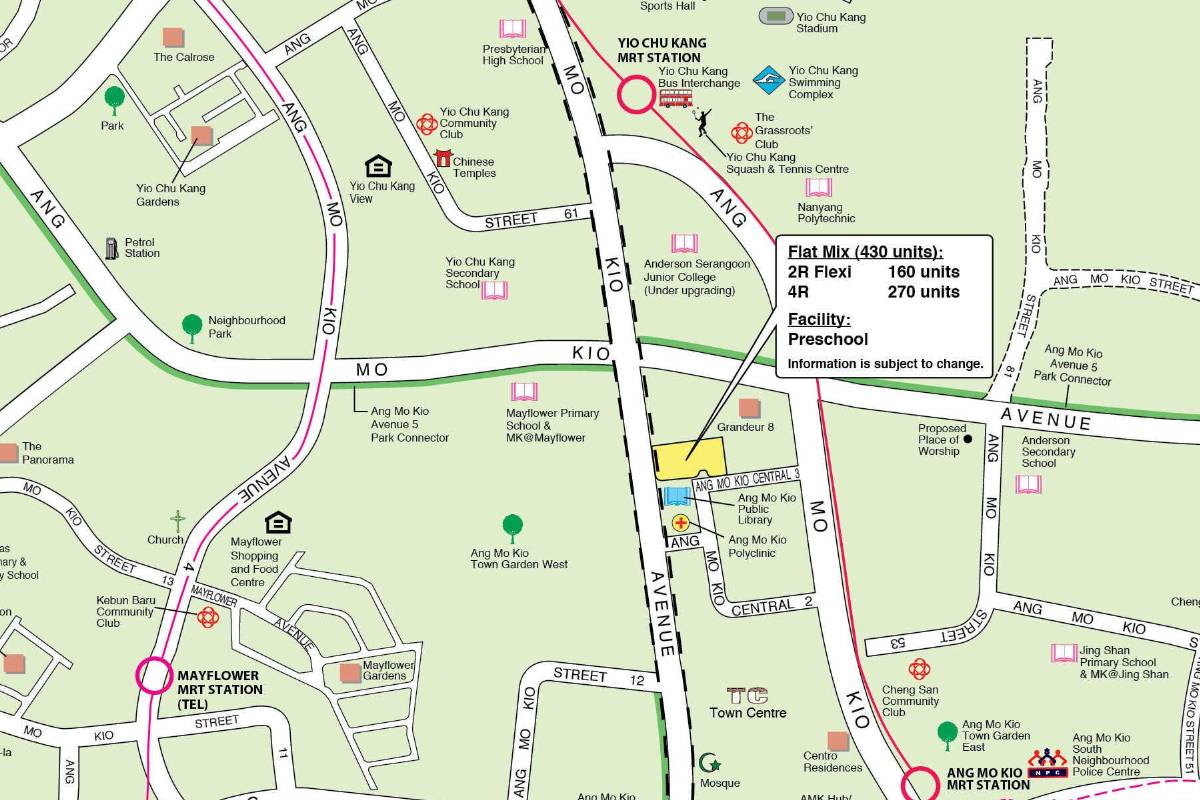
This project will likely be categorised as Plus, since Ang Mo Kio is a mature estate with lots of amenities. It is located about 10 minutes from Ang Mo Kio MRT. There are malls nearby, such as AMK Hub, Djitsun Mall and AMK Broadway, alongside many other shops and eateries.
This project will be popular among young families due to its location near a selection of good schools. Additionally, being located next to AMK public library and across a park will provide families with activities to do.
Bukit Batok – 690 units
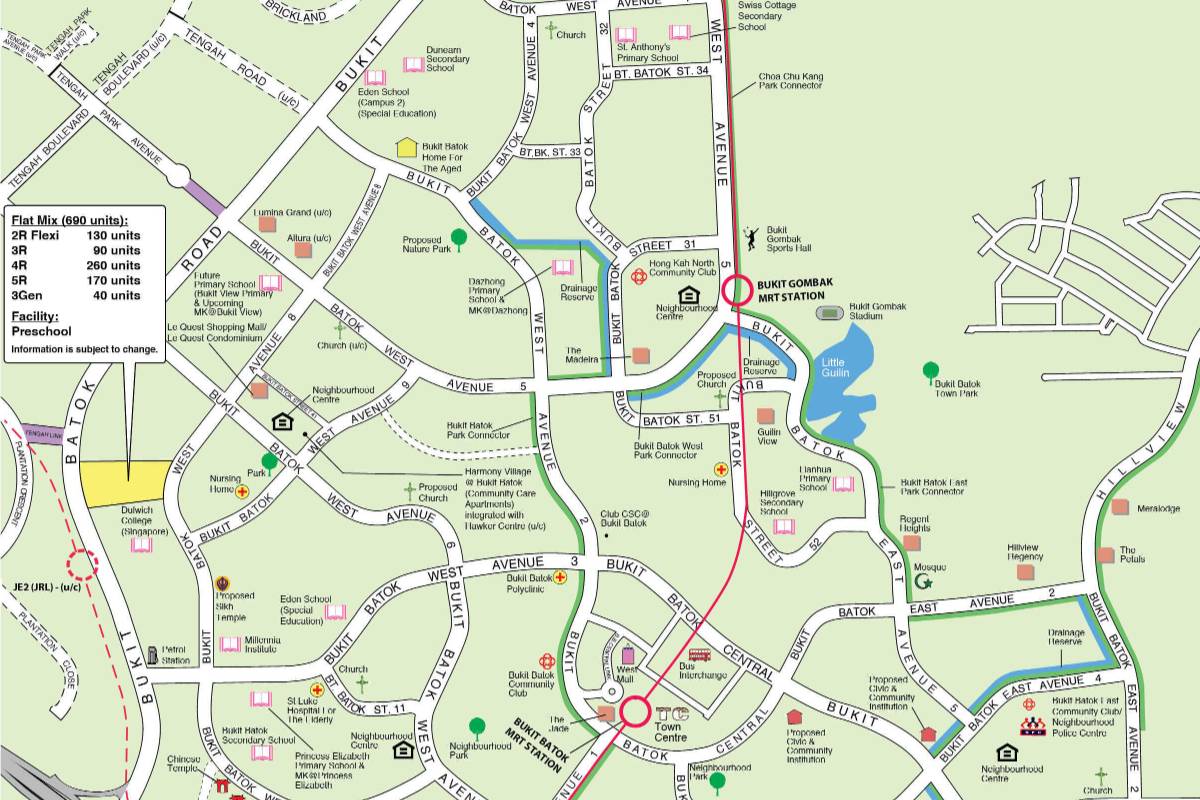
Bordering Tengah Plantation Crescent, the site will be located opposite a future (and currently unnamed) Jurong Regional Line station.
Residents can easily access future amenities in Tengah via Tengah Link, alongside offerings in Bukit Batok West, such as a shopping mall.
These will likely be standard flats and attract those working in the Jurong Lake District (JLD) or Jurong Innovation District (JID).
Bedok (Bayshore Walk) – 730 units
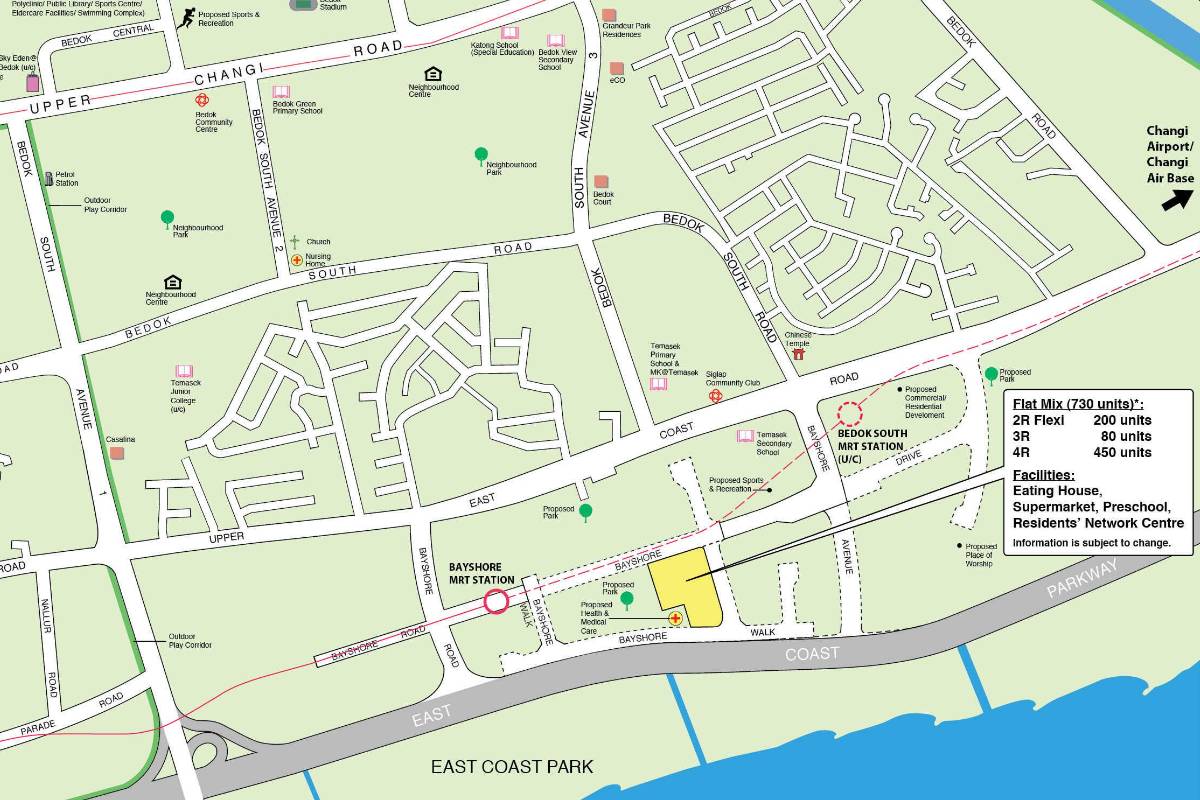
This Plus project will be within 2 minutes walking distance from Bayshore MRT, with south and east facing units on higher floors enjoying a sea view, overlooking East Coast Park
Being a new estate, we can expect to see essential amenities such as supermarkets and eating places to be built in the future. While there is only one school nearby (Temasek Secondary School), other good schools like Victoria School and Tao Nan School can be easily accessed by the Thomson East Coast Line.
This attractive location should draw considerable interest, especially among those that work in areas such as Changi Business Park or Changi Aviation Park.
Bedok (Bayshore Drive) – 710 units
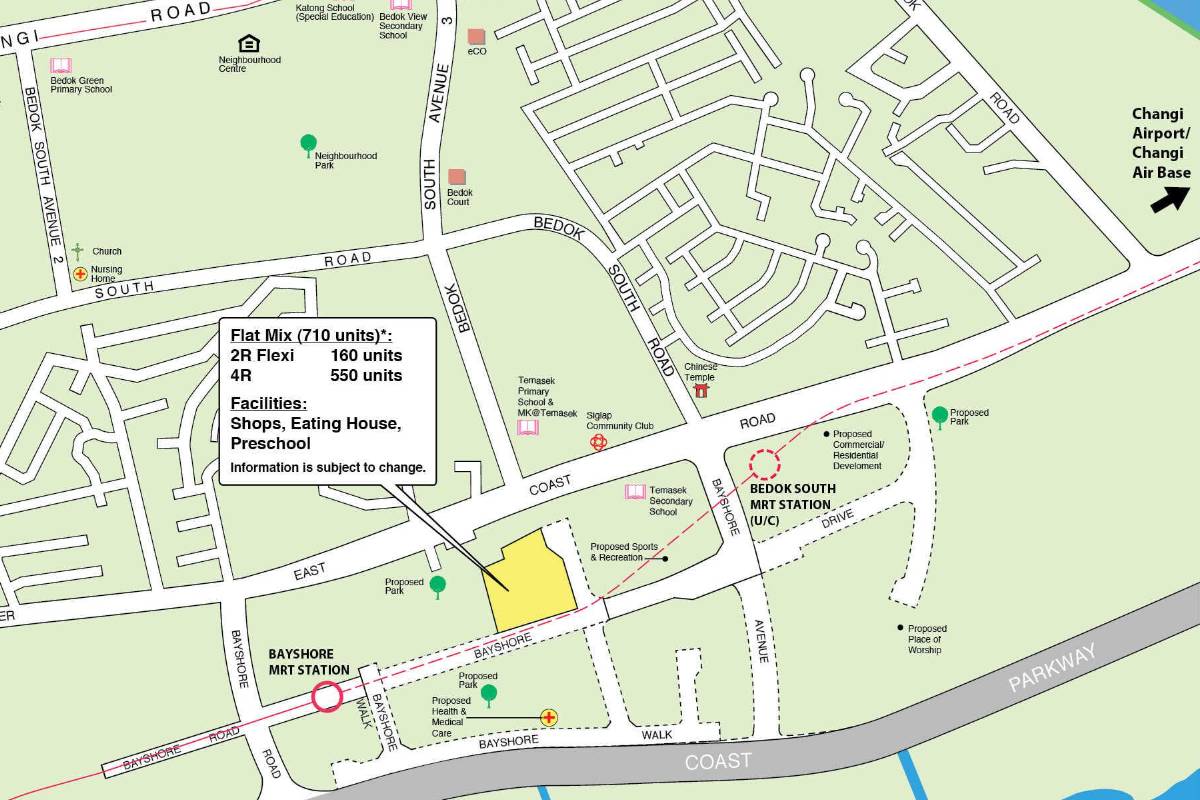
Located slightly further in from the first Bayshore site, this project will share the same Plus classification, amenities and roughly the same walking convenience from the MRT.
While residents might not enjoy the same stunning sea view as the Bayshore Walk project, instead Northern facing units here will overlook the landed enclaves in Siglap and Upper East Coast Road and provide views of the city.
With more 4-room flat options available and a shorter distance to amenities currently in Bedok South, this Bayshore project might draw more interest from larger families.
Bedok (Jalan Kembangan) – 340 units
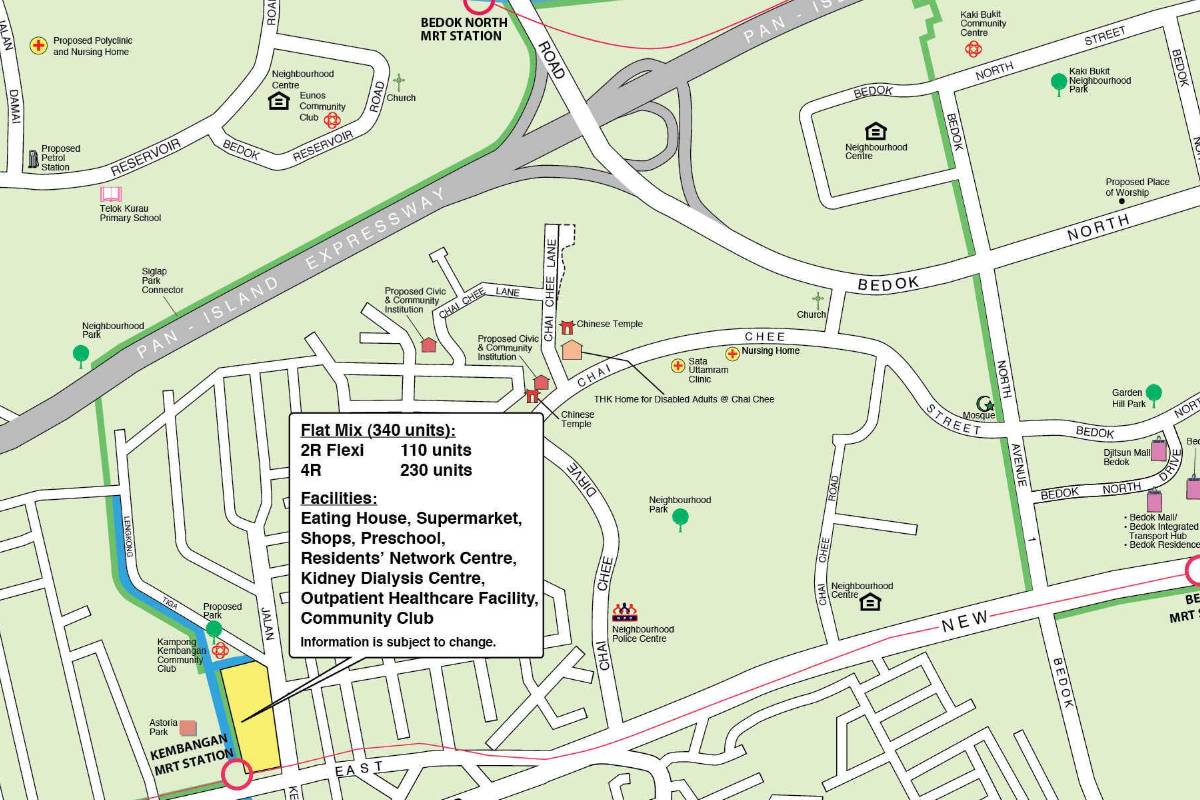
The last BTO in Bedok will be located directly across Kembangan MRT. It is also known that this project will be a mixed-used development with 5 floors of commercial space. Therefore, we strongly believe this to be a Plus flat.
As there have not been any new public housing projects within the vicinity of Kembangan MRT since the late 80s, we can expect this project to have a strong demand.
In addition to this, there are amenities such as eating places, a supermarket, preschools and parks for residents to enjoy.
Geylang – 420 units
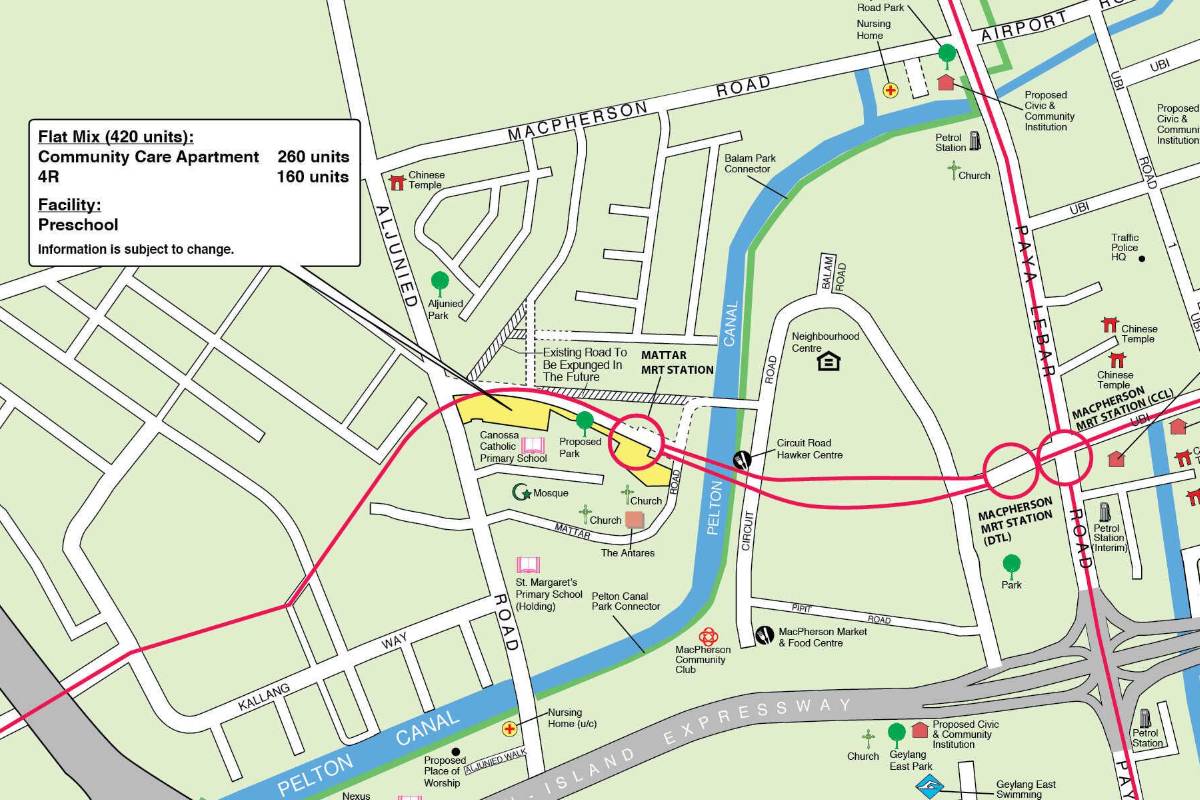
Located a minute from Mattar MRT, this BTO project in Geylang has good convenience via MRT and the PIE. There are existing amenities in the nearby areas, such as market and hawker centres at circuit road, which should make this a Plus flat.
However, with only 160 4-room flats available (the rest are community care apartments), there will be competition for the small quantity of homes. It is also worth noting that there were a pair of 4-room flats nearby at Circuit Road which transacted for over $1m recently, which might drive demand.
Jurong West – 1,840 units
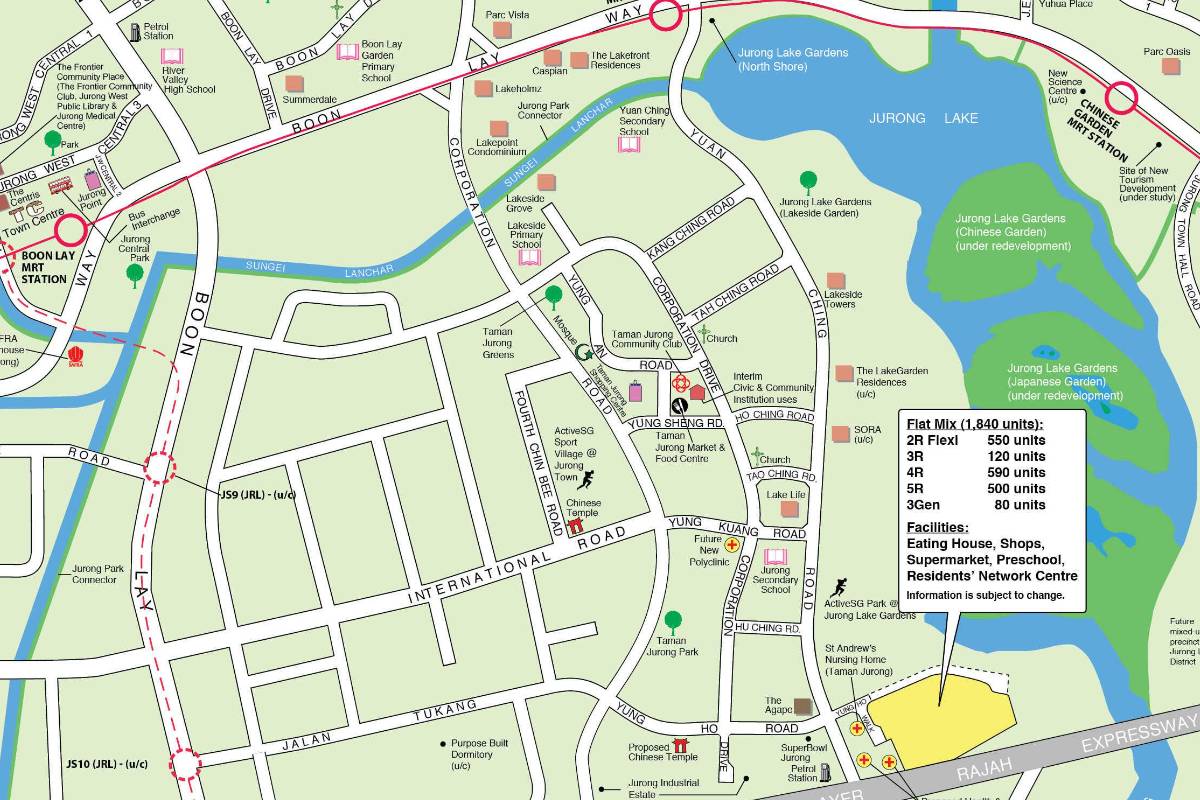
A large project with 1,840 units, this Standard project looks to create more housing supply to rejuvenate the estate and support the working population of the Jurong Lake District and Jurong Innovation District.
While the location is not directly accessible, we can expect there to be future bus services that directly connect residents to essential amenities in Jurong West and the JLD, as well as to a new MRT station on the Jurong Region Line.
Kallang/Whampoa (May Road) – 360 units
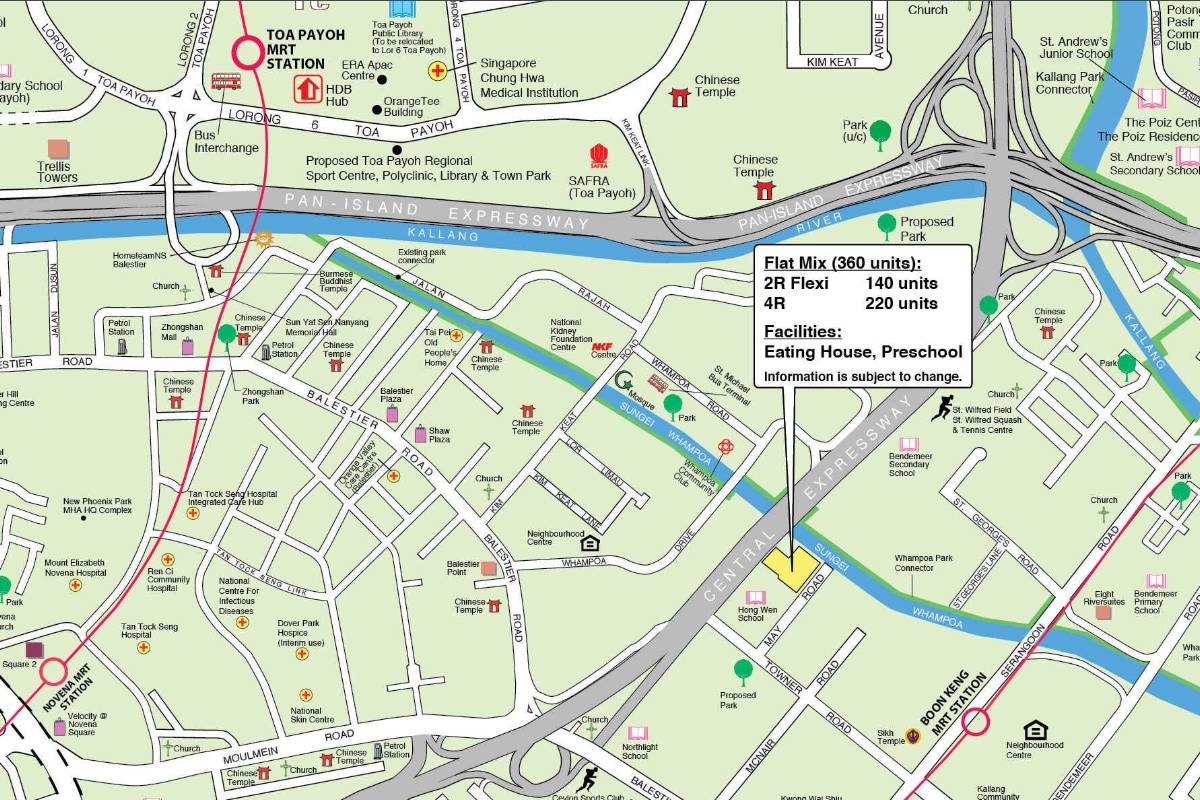
This project is located within the Boon Keng estate, about a 10 min walk away from Boon Keng MRT. Residents get to enjoy a quieter location, while still being within arm’s reach of the Boon Keng neighbourhood’s conveniences, which include a market and many eating places.
Given Boon Keng’s city fringe location, this is likely to be a Prime project. This project should still see good demand, albeit still dependent on the subsidy clawback rate.
Pasir Ris – 280 and 480 units
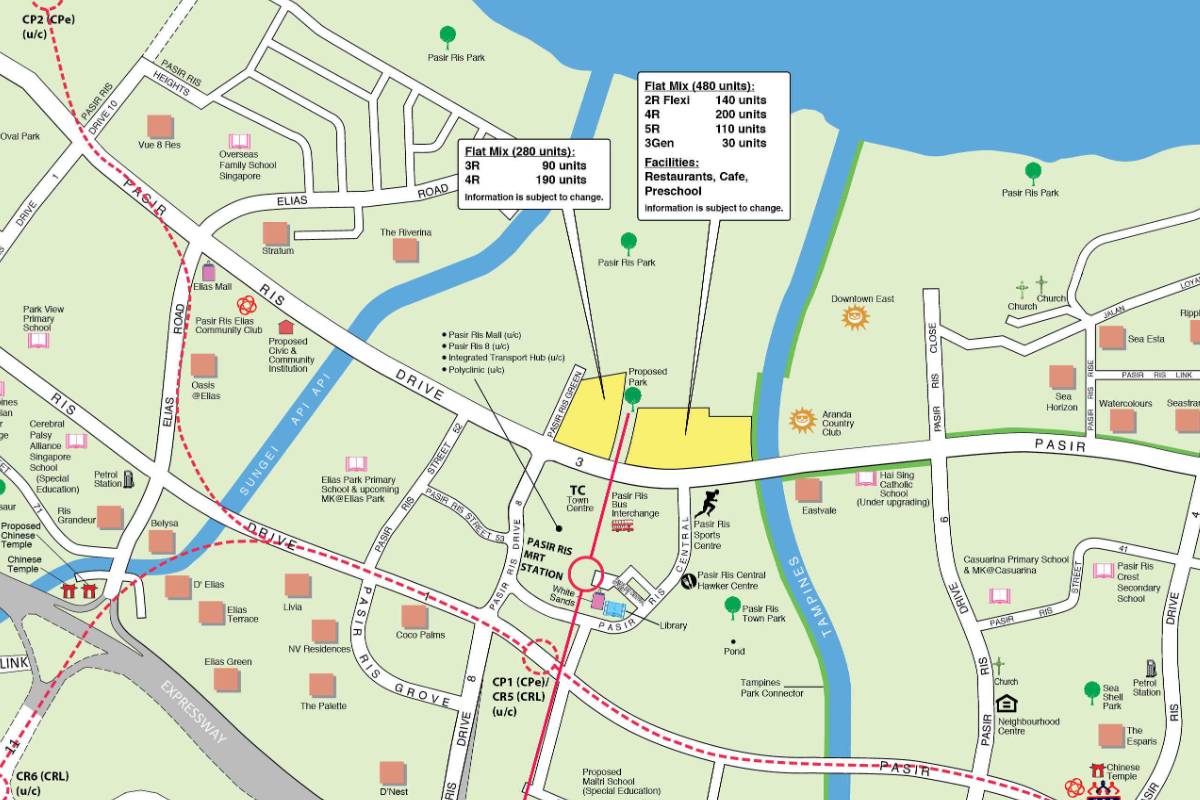
This Pasir Ris project is located directly across the MRT and bus interchange, and is made of two apartment complexes separated by a new small park.
Given its choice location in-between the MRT and Pasir Ris Park, ERA projects this to be a Plus project. This should garner considerable interest, especially among those that grew up in the area due to a wide flat mix and an abundance of amenities and conveniences.
Sengkang (Fernvale Close) – 550 units
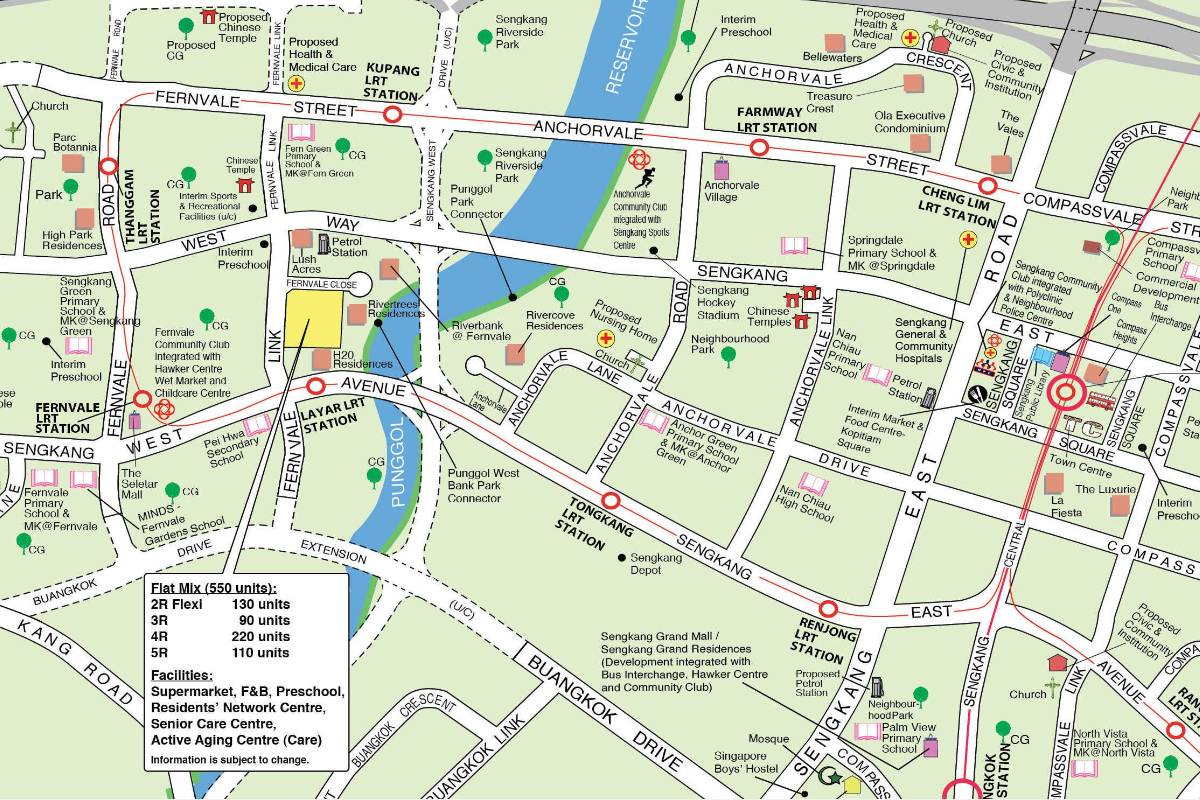
As Sengkang is a relatively new town, this project is likely to be a standard flat. It will be located across the road from Layar LRT Station, and is surrounded by many amenties such as a hawker centre, wet market and childcare centre.
Located 3 LRT stops away is Sengkang, which is an integrated transport hub with more amenities and connectivity to Punggol and the city.
Sengkang (Fernvale Road) – 840 units
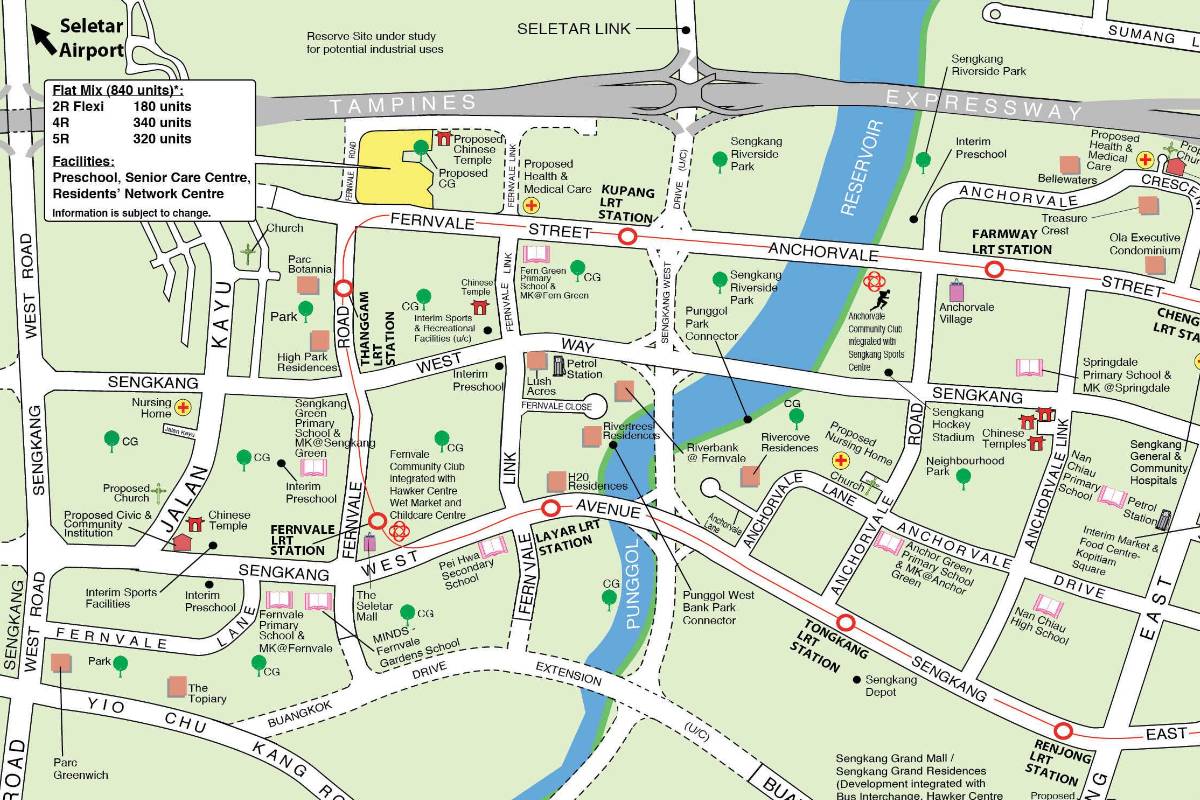
This project will be a 5-minute walk from Thanggam and Kupang LRT Stations, and offers an array of greenery, which may make it popular among those who enjoy going out into nature. There are some schools in the area which may appeal to young families with school going children.
Similar to the other Sengkang project, ERA expects this to be a Standard flat.
Kallang/Whampoa (Crawford Street) – 310 units
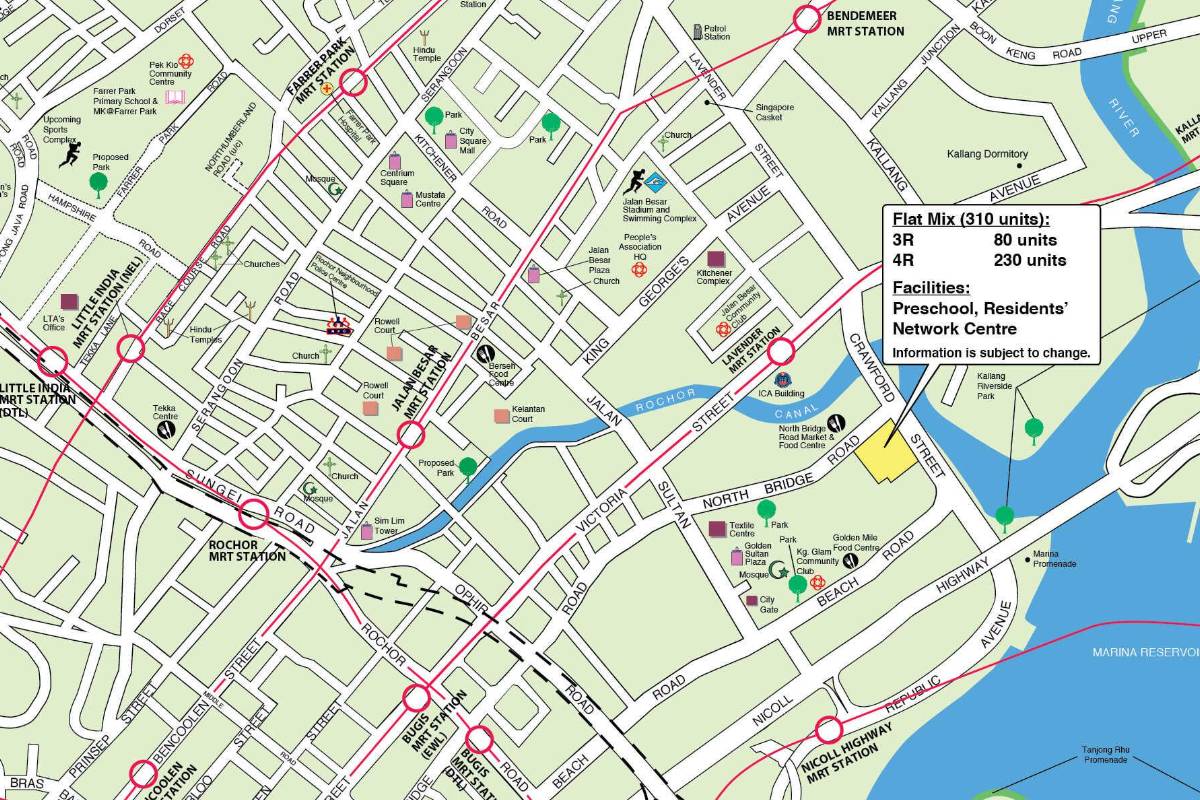
Given the proximity of this location to the city centre, this project is expected to yield strong demand especially from those working in the CBD. Therefore, it is highly likely that this would be a Prime flat.
The site is a short walk from Lavender MRT Station, which is one stop away from Bugis interchange, allowing commuters to take the Downtown line towards the CBD, Bukit Timah, and the eastern parts of Singapore. There are also several shopping centres located nearby.
Kallang/Whampoa (Upper Boon Keng Road) – 270 units
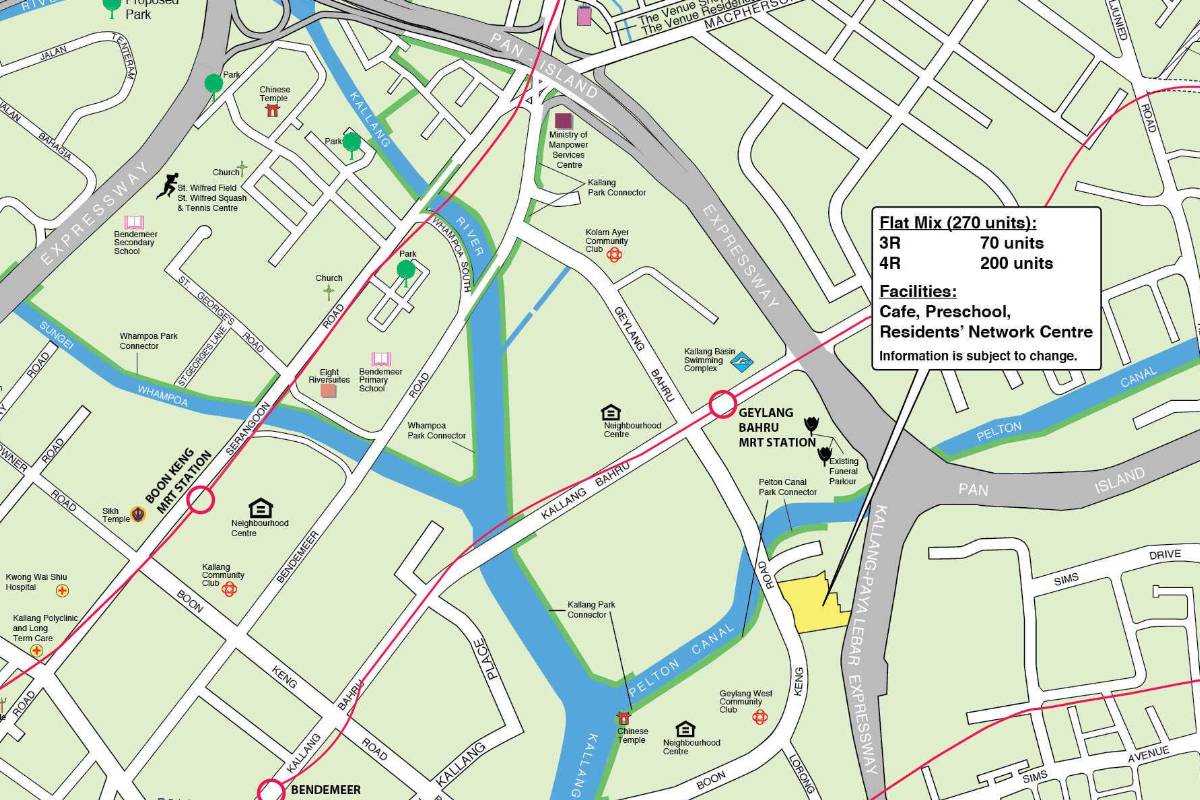
This project is located deeper into Kallang, a 9-minute walk away from Geylang Bahru MRT, which offers this quieter neighbourhood convenience to the city. As it is located close to the city centre, this should be a Prime flat.
The site is near other towns such as Potong Pasir and Boon Keng, where residents can visit for amenities such as food. Children can also access schools in these areas, such as St. Andrews School. As with all the other prime projects, the demand for these flats will vary greatly depending on the subsidy clawback rates.
Woodlands – 290 units
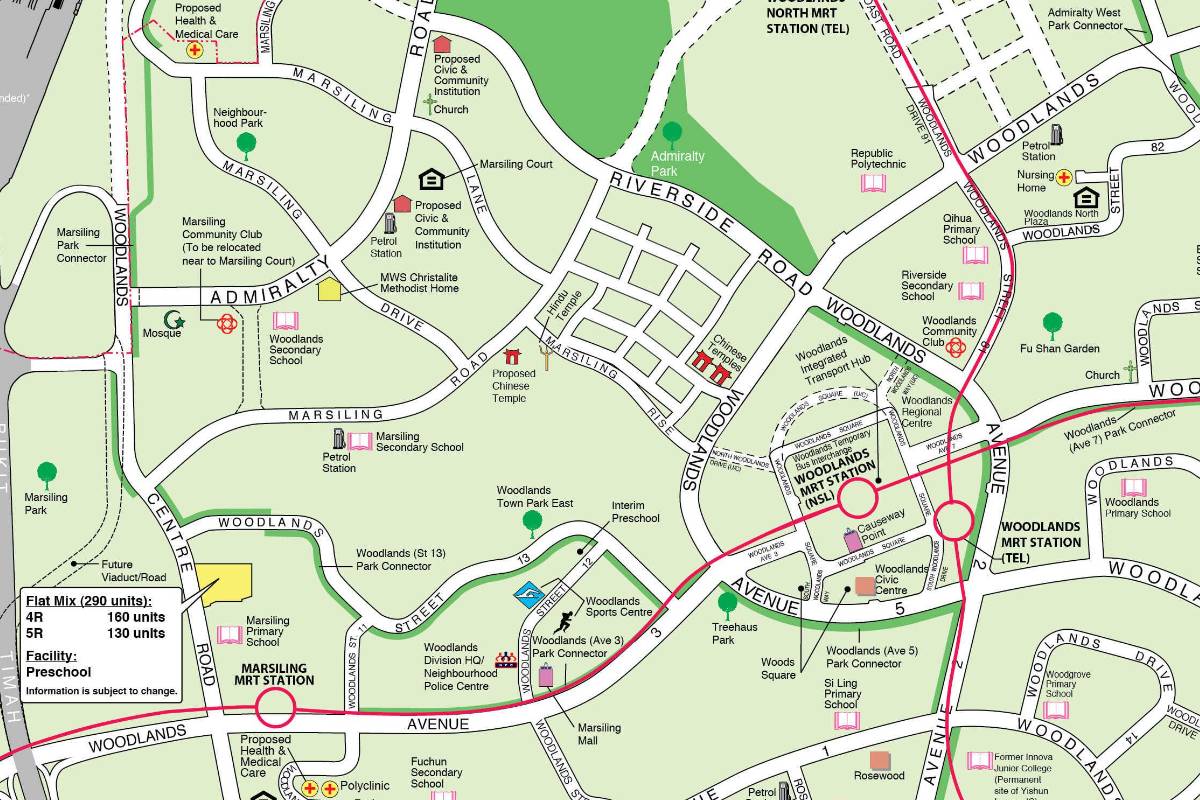
This Woodlands site is a 10-minute walk away from Marsiling MRT and comprises of 4 and 5 room units. The project is nearby Marsiling Primary and Secondary Schools as well as amenities, making these flats an option to consider for families with children.
Furthermore, it is located one MRT stop away from Woodlands integrated transport hub and the future Woodlands Regional Centre. This plus project should gather good interest from those who want to stay in the north.
For more information on the October 2024 BTO Launch, visit HDB’s official site here.
Disclaimer
This information is provided solely on a goodwill basis and does not relieve parties of their responsibility to verify the information from the relevant sources and/or seek appropriate advice from relevant professionals such as valuers, financial advisers, bankers and lawyers. For avoidance of doubt, ERA Realty Network and its salesperson accepts no responsibility for the accuracy, reliability and/or completeness of the information provided. Copyright in this publication is owned by ERA and this publication may not be reproduced or transmitted in any form or by any means, in whole or in part, without prior written approval.
The first wave of Build-To-Order (BTO) flats launched in February 2024 were generally well received by the public, receiving an application rate of about 2.5 times (10,521 applications for 4,126 units). The application rate even peaked at 5.2 times (with 1,300 applicants for 251 units) for the Tanglin Halt Courtyard project, under the Prime Location Public Housing (PLH) model.
The HDB plans to keep momentum with the next BTO launch in June 2024. This launch will comprise 6,830 flats across a mixture of six mature and non-mature estates, namely Jurong East, Kallang/Whampoa, Queenstown, Tampines, Woodlands, and Yishun. This marks the last BTO launch where flats are still classified under mature/non-mature estates. In the following October BTO launch, the BTO flats will be reclassified as “Standard”, “Plus” and “Prime” flats.
List of projects under the June 2024 BTO launch
| Planning area | Number of flats | Flat types |
| Jurong East | 1,070 | 2, 3, 4, and 5-room |
| Kallang/Whampoa | 2,020 | 2, 3, and 4-room |
| Queenstown | 330 | 2 and 4-room |
| Tampines | 550 | 2, 4, and 5-room |
| Woodlands | 1,590 | 2, 3, 4, 5-room + 3Gen |
| Yishun | 1,270 | 2, 3 4, and 5-room |
Source: HDB, ERA Research and Market Intelligence Here are highlights from this launch:
- A long-awaited BTO in Queenstown, with its first public housing launch in over a decade
- The Kallang Whampoa (Tanjong Rhu) BTO, which is the first BTO project in the area in 60 years
- Yishun (Chencharu), a new residential area along Sembawang Road, former location of Orto leisure park
Jurong East (Non-Mature Estate)
Nestled at the intersection of Teban Gardens Road and Jurong Town Hall Road, the project offers 1,070 units in 2-room flexi, 3-room, 4-room and 5-room configurations. Picture 1: Map view of the June 2024 Jurong East BTO site

Source: HDB, ERA Research and Market Intelligence
This upcoming Jurong East BTO development looks to provide more housing options to support the development of the Jurong Lake District (JLD), which is set to transform into Singapore’s second and largest business centre outside the Central Business District (CBD). Therefore, securing a unit here would be attractive to those working in jobs and industries there. The project will be across the future Pandan Reservoir MRT Station on the Jurong Regional Line, upon completion in 2027. Located 2 stops from Jurong East MRT station, residents can reach the city centre in under 30 minutes. With the JLD set to transform into Singapore’s second and largest business centre outside the CBD, securing a unit here would be attractive to those working in jobs and industries there. Notable amenities near this project include Teban Neighbourhood Park, Pandan Reservoir Park and Pandan Gardens Leisure Park. These amenities should provide a green view for higher-floor units.
Kallang/Whampoa (Mature Estate)
This project, which will be situated along Kampong Arang Road, attracted significant interest earlier this year. This is due to its prime location, being the first HDB project in the area in 60 years. Picture 2: Map view of the June 2024 Kallang/Whampoa BTO site

Source: HDB, ERA Market Research and Intelligence
These Tanjong Rhu projects present a new inventory of residences in an area that has awaited public housing expansion for some time. A highlight of this project is the stunning view and quiet location, with views of the Geylang River waterfront and the Sports Hub in Kallang. The site will be located near Tanjong Rhu, Katong Park and Mountbatten MRT stations, which allows commuters to reach the CBD in 15 minutes. There will be 2,020 units launched in two plots, comprising 1,400 and 620 units respectively. A selection of 2-room flexi, 3-room, and 4-room flats will be offered. While the area is sparse, we can expect further development in the future. In the meantime, the project will include basic amenities like dining options and supermarkets. The attractive locality of this project leads us to believe that it will fall under the Prime Location Public Housing Model (PLH). This means that residents can enjoy additional subsidies, albeit with quirks such as a subsidy clawback upon resale, and a longer Minimum Occupation Period (MOP) of 10-years.
Queenstown (Mature Estate)
The second and last entry on our list that is anticipated to fall under the PLH model is the upcoming project in Queenstown. Picture 3: Map view of the June 2024 Queenstown BTO site

Source: HDB, ERA Research and Market Intelligence
This coveted location is walkable from both Holland Village and Buona Vista MRT stations. This makes it a fantastic location for those working at Science Park and the One-North precinct, being a mere 5-minute MRT ride away. It is also close to established educational institutions such as Anglo Chinese School (International). The National University of Singapore is also located just 10 minutes away via the Circle Line. There are a wide variety of food choices available from restaurants to popular cafes and food centres, such as Holland Village Market and Holland Drive Market. All of which are a short walk from the project site. With only 330 units being released in June, which comprise 110 2-room flexi flats, and 220 4-room flats, there is sure to be fierce demand considering the popularity of the area.
Tampines (Mature estate)
The site is located at the corner of Tampines Avenue 1 and Tampines Street 92, offering fantastic accessibility while retaining a charming neighbourhood vibe. Picture 4: Map view of the June 2024 Tampines BTO site

Source: HDB, ERA Research and Market Intelligence
This project looks to attract people who work in the many aviation and technology jobs available in the East – in areas such as Changi Business Park and Changi Airport. A 7-minute walk from Tampines West MRT (along the downtown line), situated just one stop away from Tampines Regional Centre, residents can enjoy a comprehensive range of amenities available there. Tampines is known for its retail options: between the shopping malls at Tampines central and Tampines retail hub, there is no shortage of places to shop and dine for residents there. There are many schools within enrolment priority distance here, notably St. Hilda’s Primary and Secondary. Temasek Polytechnic is just an 8-minute bus ride away. This BTO launch will see 550 units released, with 2-room flexi, 4-room and 5-room options.
Woodlands (Non-Mature Estate)
The first of two north-side projects in this June launch, the Woodlands BTO site will be at the intersection of Marsiling Lane and Admiralty Road. Picture 5: Map view of the June 2024 Woodlands BTO site

Source: HDB, ERA Research and Market Intelligence
This project stands out from the others in June by being the furthest away from an MRT station. Woodlands and Woodlands North MRT stations are 2km away. To make up for the lack of convenience, the project looks to offer essential amenities to its future residents, such as eateries, shops, and a supermarket. Schools in the area include Republic Polytechnic and Riverside Secondary School. The project will consist of 1,590 units. With such a large number of units available, applicants will have a better chance of securing their dream home. Future residents can look forward to the continued development of the Woodlands Regional Centre, and the anticipated Rapid Transit System, and the future completion of the North-South corridor, which will drastically improve connectivity to central locations in Singapore. The is also the only development of the June launch to feature the 3Gen unit size. The other flat options include 2-room flexi, 3 room, 4 room and 5 room flats. This project should cater nicely to those who specifically need a 3gen flat or current Woodlands residents looking for a new flat.
Yishun (Non-Mature Estate)
Last on the list of June launches is Chencharu, a brand-new residential area in Yishun. Situated along Sembawang Road, it is near the location formerly occupied by Orto Leisure Park. Picture 6: Map view of the June 2024 Yishun BTO site

Source: HDB, ERA Research and Market Intelligence
Being an entirely new housing zone, there are no nearby facilities. The project will come with amenities such as eating houses and shops, as well as a childcare centre. The surrounding area will be redeveloped to introduce amenities like a park, nursing home, and place of worship. As this development is to be built as part of an upcoming estate, the area currently suffers from a lack of connectivity. It is a 15-minute walk from Khatib MRT station. However, we can expect new and additional bus services to provide connectivity to future residents when the time comes, like what we saw in Tengah recently. There will be 1,270 units on offer, in configurations like 2-room flexi, 3-room, 4-room, and 5-room flats. As BTO flats constructed in Yishun in recent years have been remote and inaccessible to the town’s MRT stations, this Chencharu development is a breath of fresh air. It allows applicants interested in living in Yishun to score a new flat nearer to an MRT. Disclaimer for consumers This information is provided solely on a goodwill basis and does not relieve parties of their responsibility to verify the information from the relevant sources and/or seek appropriate advice from relevant professionals such as valuers, financial advisers, bankers and lawyers. For avoidance of doubt, ERA Realty Network and its salespersons accept no responsibility for the accuracy, reliability and/or completeness of the information provided. Copyright in this publication is owned by ERA and this publication may not be reproduced or transmitted in any form or by any means, in whole or in part, without prior written approval.